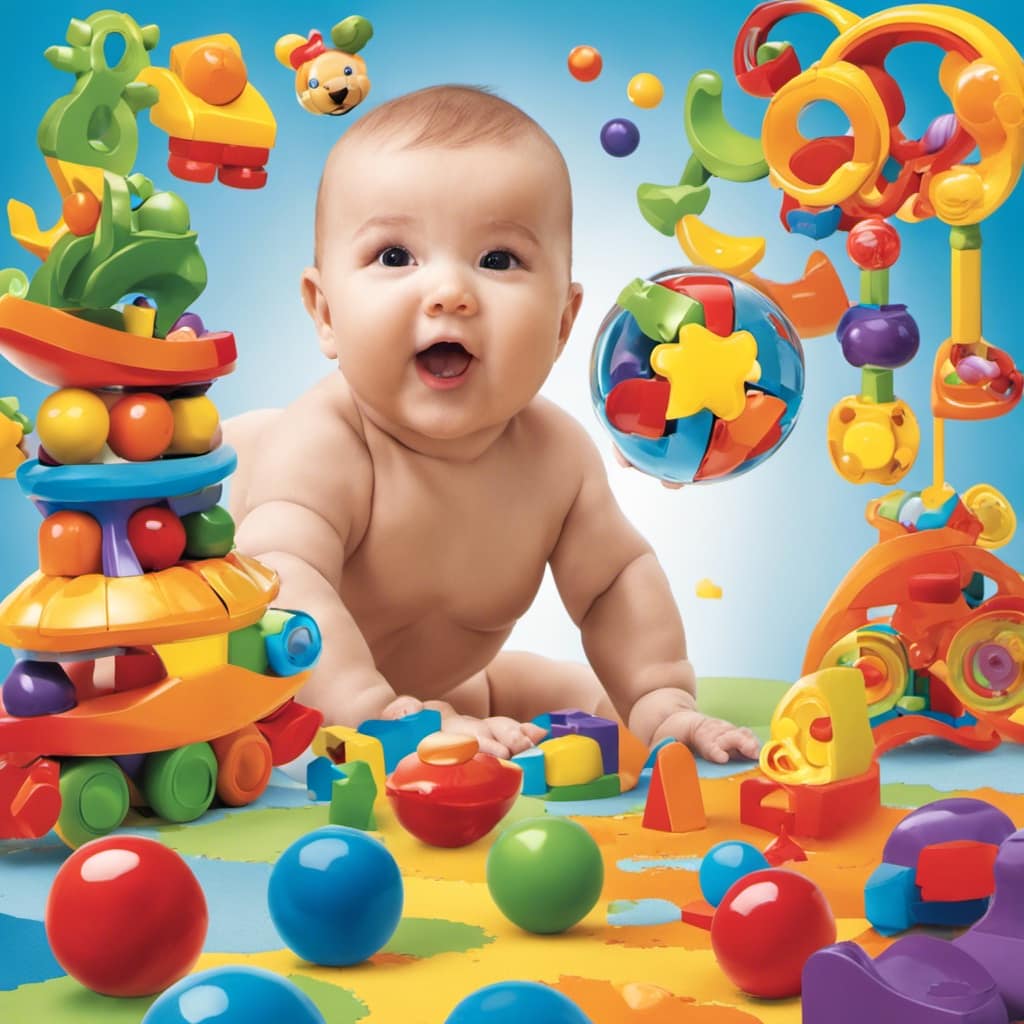Hello, parents! Are you looking for safe and engaging Montessori toys for your kids? Look no further!
We’ve put together a list of 15 tried-and-true options that will keep your kids entertained while promoting their development. From wooden blocks to sensory balls, musical instruments to sorting games, these toys are designed to spark creativity and encourage learning.
So, let’s dive in and discover the perfect toys for your little learners!
Key Takeaways
- Building and stacking toys, such as wooden blocks, are beneficial for creative play and cognitive development.
- Sensory and tactile toys, like sensory balls and threading toys, provide sensory stimulation and help develop fine motor skills.
- Cognitive development toys, such as shape sorters and puzzle sets, aid in problem-solving and critical thinking skills.
- Musical and creative toys, such as musical instruments and pretend play sets, allow for imaginative play and creative expression.
Wooden Blocks
We love using a variety of wooden blocks in our Montessori classroom to promote open-ended and imaginative play. Creative block play isn’t only fun for children but also plays a crucial role in their cognitive development.
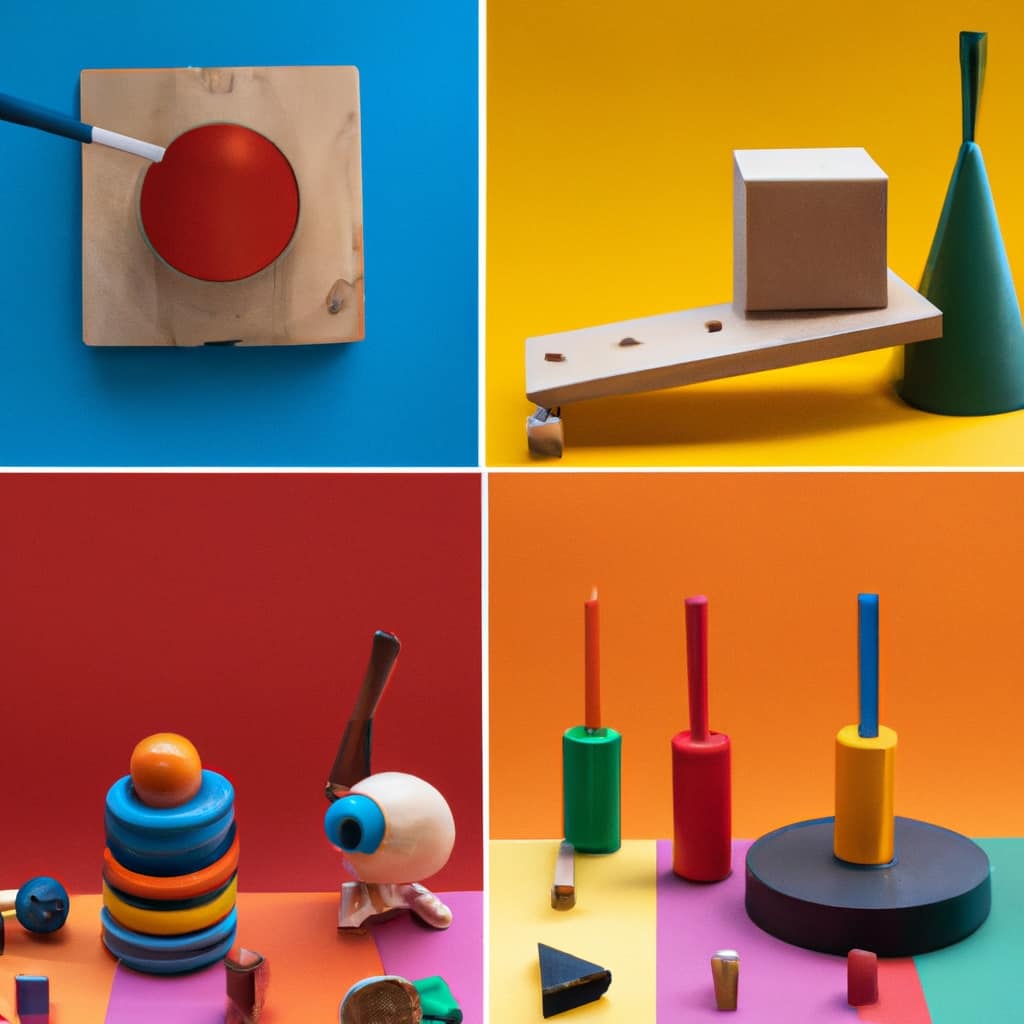
Through exploring different shapes, sizes, and colors of blocks, children develop their problem-solving skills, spatial awareness, and critical thinking abilities. As they stack, build, and knock down structures, they learn about balance, cause and effect, and concepts such as gravity and stability.
Block play also fosters creativity and imagination, as children can create endless possibilities and scenarios with the blocks. Whether they’re building a towering castle, constructing a bridge, or creating a pretend city, children’s minds are engaged, and their creativity flourishes.
Wooden blocks truly provide a foundation for holistic learning and development.
Sensory Balls
One of the essential toys in our Montessori classroom is the use of sensory balls for engaging and interactive play. These balls aren’t just ordinary toys; they serve a purpose in the development of sensory and motor skills in children.
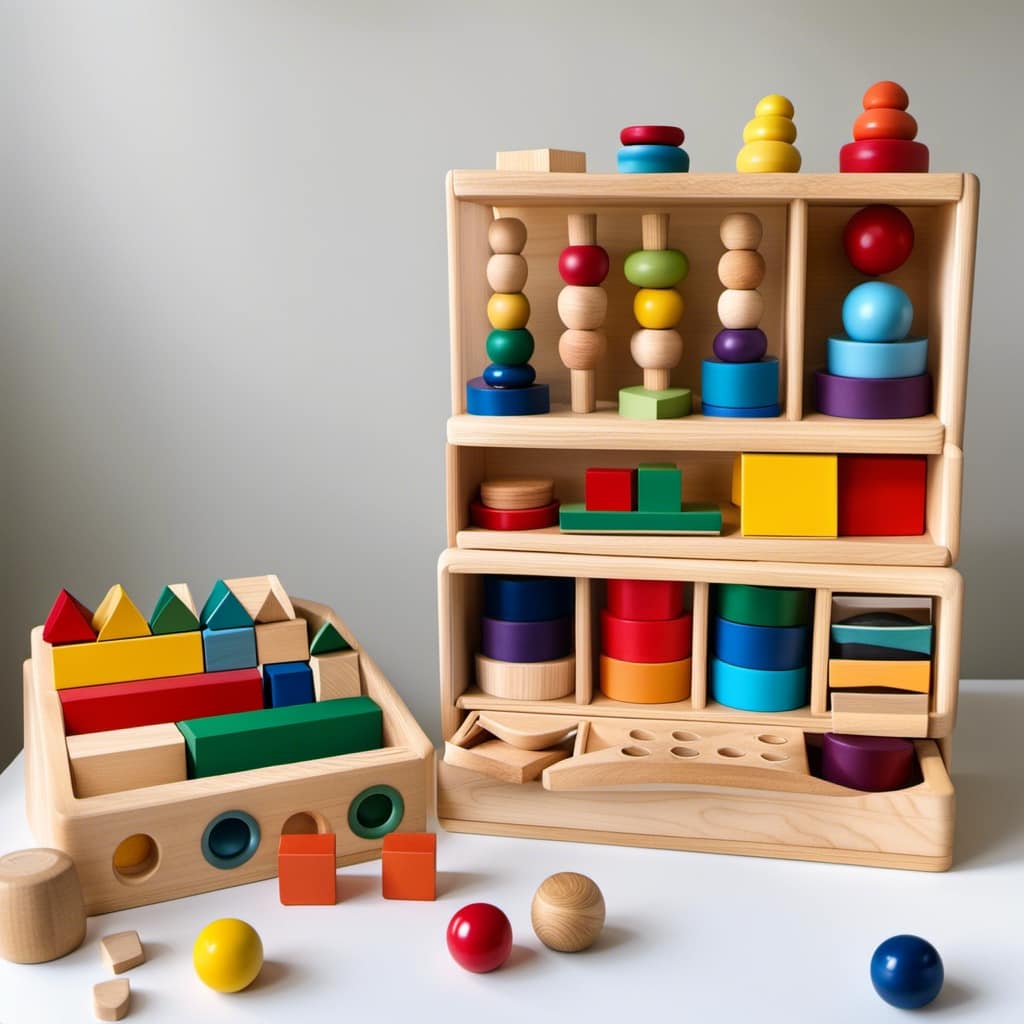
Sensory balls are designed to stimulate the senses and provide tactile feedback, helping children explore different textures, shapes, and sizes. By squeezing, rolling, and tossing these balls, children enhance their hand-eye coordination, fine motor skills, and gross motor skills.
The sensory input from these balls also promotes sensory development, allowing children to experience different sensations and develop their sensory processing abilities. Whether it’s a soft squishy ball or a bumpy textured ball, sensory balls provide endless opportunities for children to engage their senses and develop important skills in a fun and playful way.
Shape Sorters
Shape sorters are another important toy in our Montessori classroom, providing children with a hands-on way to learn about shapes and develop their cognitive and problem-solving skills. The benefits of shape sorters go beyond just recognizing shapes. They also help children improve their fine motor skills, hand-eye coordination, and spatial awareness.
By manipulating the different shapes and fitting them into the corresponding holes, children learn to analyze and categorize based on shape, size, and color. There are various types of shape sorters available, including the classic cube with different cut-out shapes, puzzles with shape matching features, and even electronic shape sorters that provide a more interactive experience. Each type offers its own unique learning opportunities.
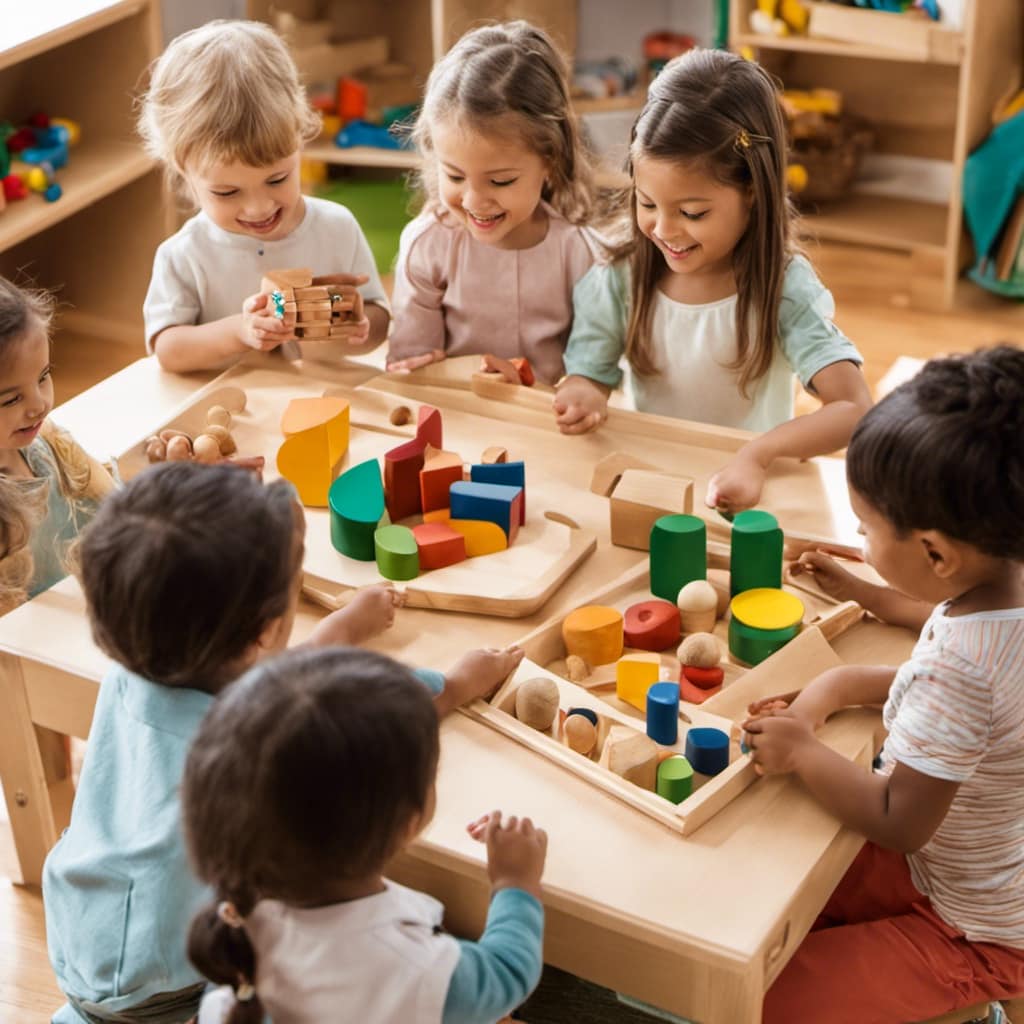
Now, let’s move on to the next section and explore the world of musical instruments.
Musical Instruments
Let’s explore the world of musical instruments and how they can be safe and beneficial for your little ones in a Montessori setting. Musical instruments offer a wide range of creative expression options for children, allowing them to explore different sounds, rhythms, and melodies. Not only do they provide a fun and enjoyable way to engage with music, but they also offer numerous developmental benefits. Playing musical instruments helps improve hand-eye coordination, fine motor skills, and concentration. It also enhances cognitive abilities, such as problem-solving and memory. Moreover, it encourages self-expression and boosts confidence as children learn to create their own music. To give you an idea of the musical instruments suitable for your little ones, here is a table showcasing some safe and age-appropriate options:
| Instrument | Age Range |
|---|---|
| Xylophone | 1-3 years |
| Tambourine | 2-5 years |
| Recorder | 3-6 years |
Introducing musical instruments in a Montessori setting can foster a lifelong love for music and provide your little ones with a unique outlet for self-expression and creativity.
Nesting Toys
Now let’s explore nesting toys and how they can provide a safe and engaging play experience for your little ones in a Montessori setting.
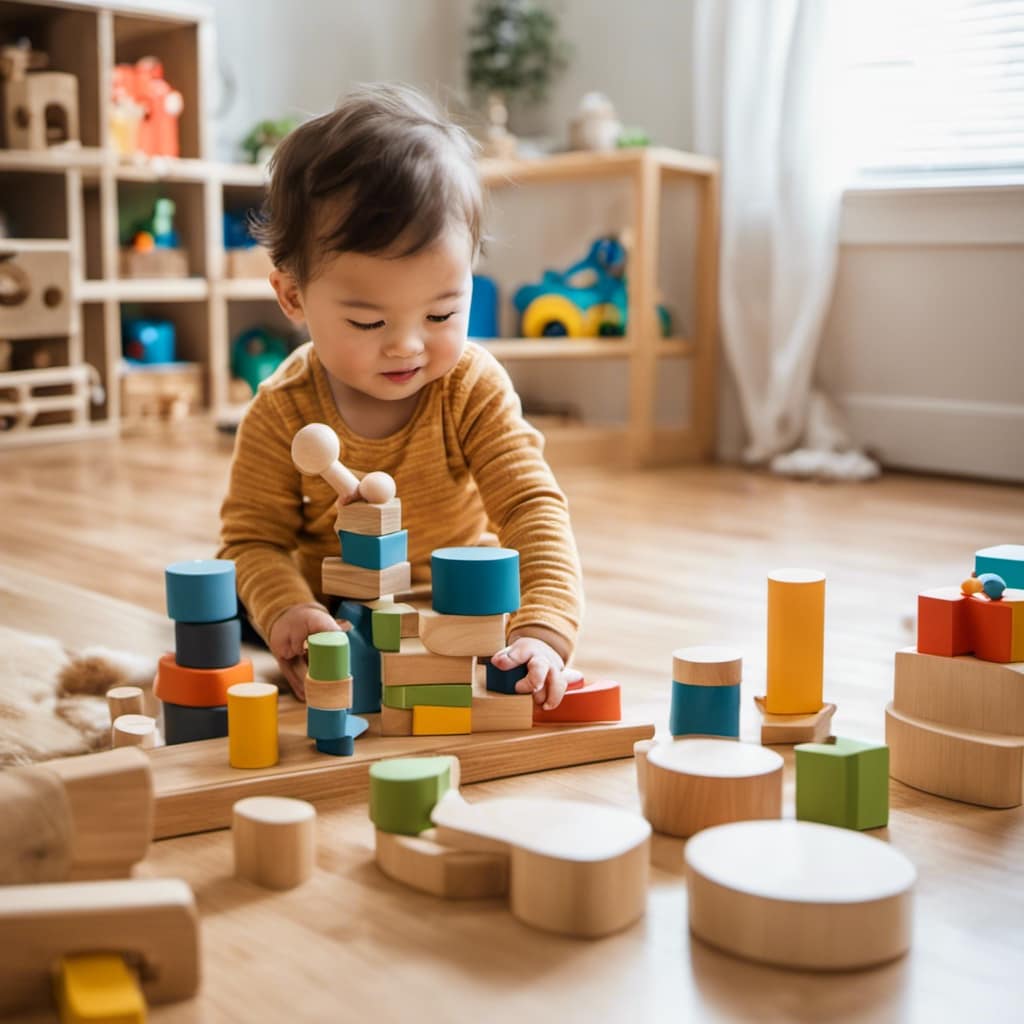
Nesting toys are a great way to encourage your child’s cognitive development and fine motor skills. These toys consist of a set of different-sized containers that fit inside one another.
The benefits of nesting toys are manifold. They help children understand the concept of size and spatial relationships as they stack the containers in the correct order. They also promote problem-solving skills and hand-eye coordination as they figure out how to fit the containers together.
Some recommended nesting toy sets include the Melissa & Doug Nesting and Sorting Garages and Cars, and the Green Toys Stacking Cups. These sets are made of safe and durable materials, ensuring hours of safe and enjoyable play.
Transitioning to the next section, let’s now explore the benefits of puzzle sets.
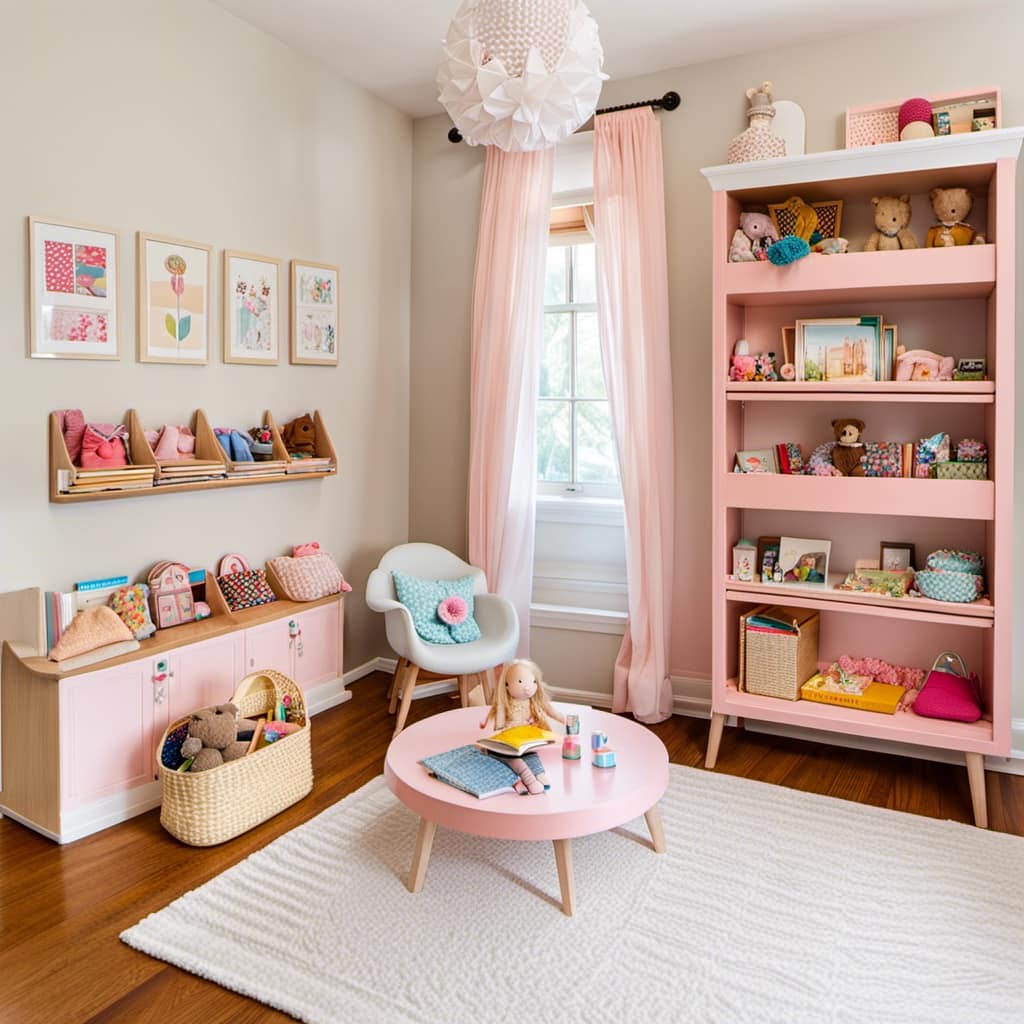
Puzzle Sets
Moving on to the next section, we’ll now explore the benefits of incorporating puzzle sets into your child’s Montessori playtime. Puzzle sets aren’t only fun but also provide numerous advantages for your little one’s development.
-
Problem Solving Skills: Puzzle sets challenge children to think critically and find solutions. As they manipulate the pieces, they learn to analyze, reason, and develop problem-solving strategies.
-
Cognitive Development: Engaging with puzzle sets enhances cognitive skills such as concentration, memory, and spatial awareness. Children learn to recognize shapes, colors, and patterns, improving their visual processing abilities.
-
Fine Motor Skills: Manipulating puzzle pieces helps develop hand-eye coordination and fine motor skills. By grasping, fitting, and manipulating the pieces, children strengthen their finger muscles, preparing them for writing and other manual tasks.
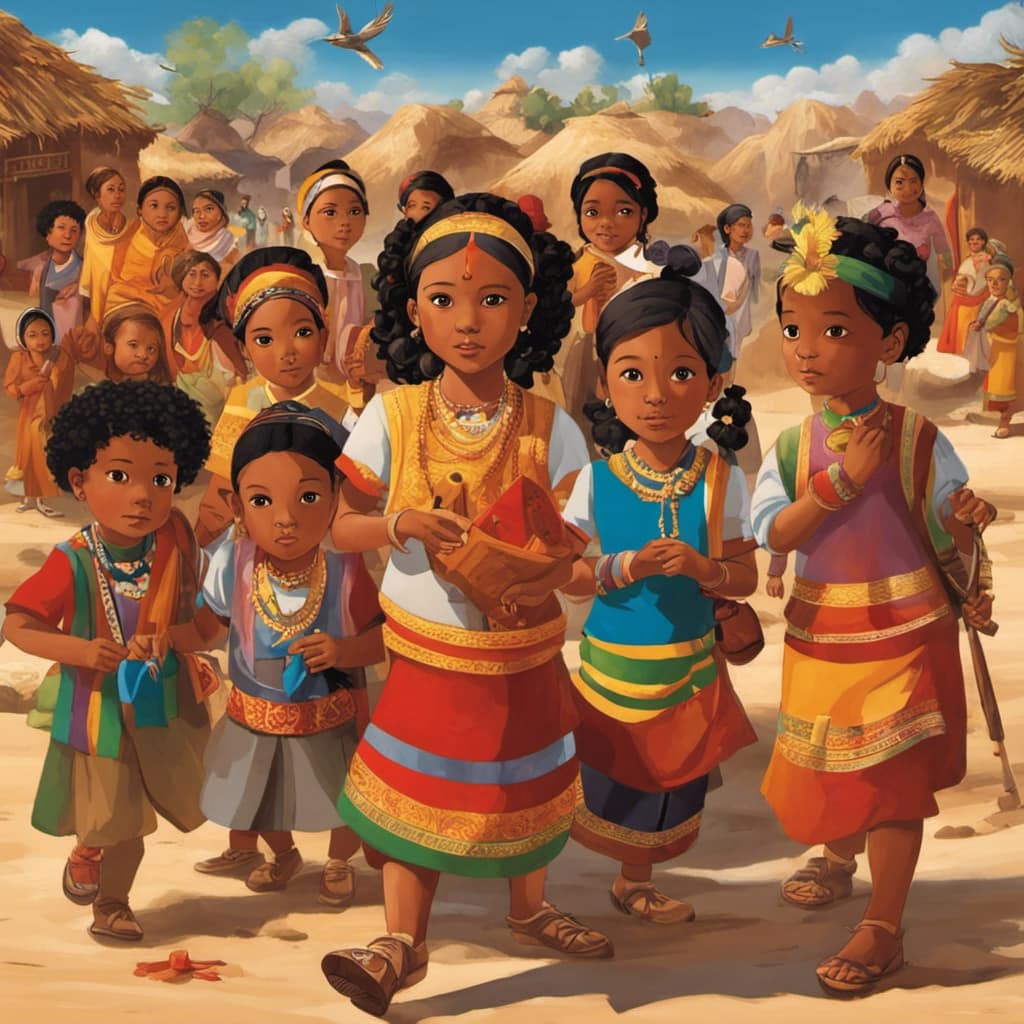
Incorporating puzzle sets into your child’s playtime not only provides entertainment but also promotes essential skills like problem solving and cognitive development. Watch as your little one grows and thrives while enjoying the benefits of these engaging Montessori toys.
Stacking Rings
As we delve into the next section, we can explore the benefits of incorporating stacking rings into our child’s Montessori playtime.
Stacking rings aren’t only a fun and engaging toy, but they also offer numerous developmental advantages for our little ones. These Montessori inspired stacking activities help improve hand-eye coordination, fine motor skills, and problem-solving abilities.
By manipulating the rings and carefully placing them on the base, children learn about size, shape, and spatial awareness. They also develop their concentration and patience as they try to stack the rings in the correct order. Stacking rings provide a sense of accomplishment and pride when children successfully complete the task.

Now, let’s move on to the next section where we’ll explore the benefits of building blocks in our child’s Montessori journey.
Building Blocks
When it comes to building blocks, we all know that they’re a classic toy that promotes creative play and imagination. Not only do they provide endless possibilities for constructing towers, houses, and bridges, but they also offer numerous benefits for your child’s development.
From improving fine motor skills to enhancing problem-solving abilities, block play is a valuable learning experience. To ensure your little ones have safe and age-appropriate building blocks, we’ve compiled a list of recommended block sets that are perfect for their Montessori education.
Creative Play With Blocks
One of our favorite ways to encourage creative play with our little ones is by providing them with a set of building blocks. Building block play isn’t only fun but also crucial for their development. Here are three ways in which children can engage in imaginative play with blocks:
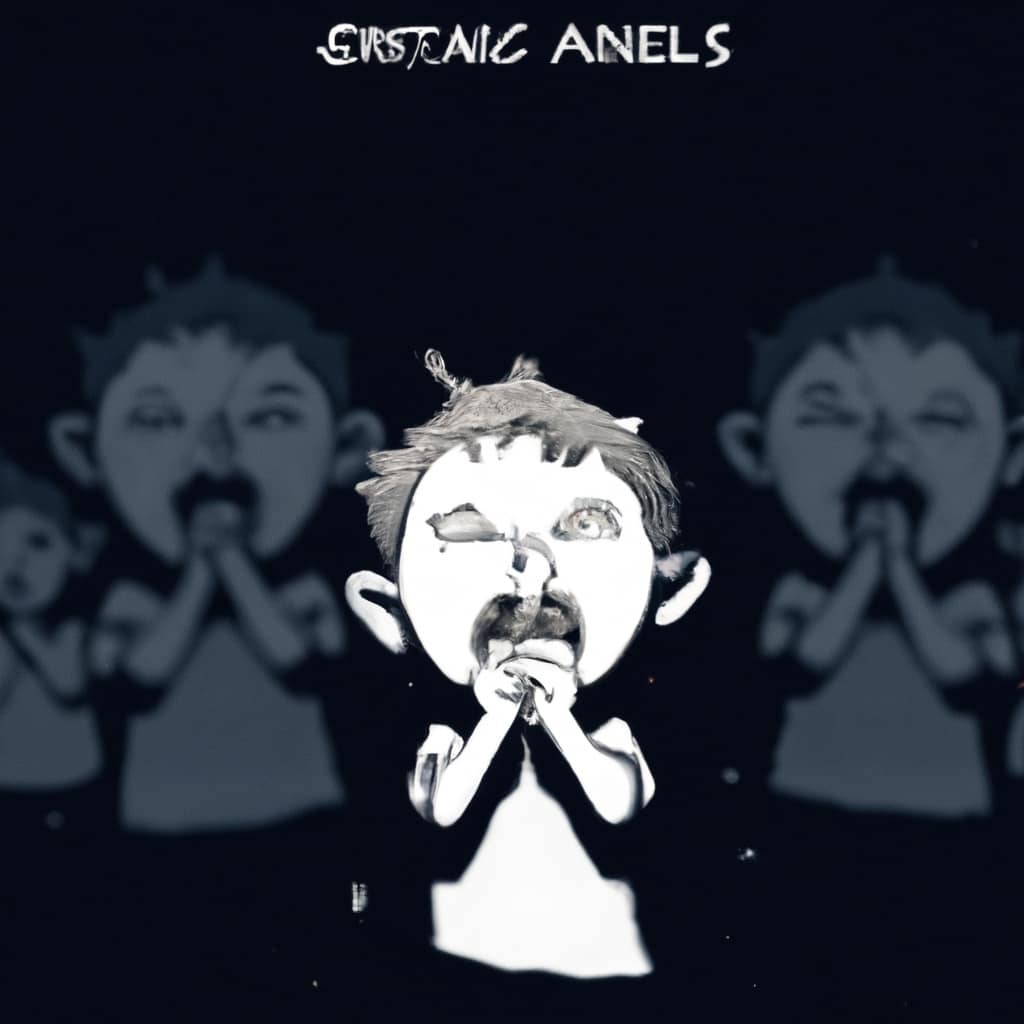
-
Building towers: Children can stack blocks one on top of the other to create tall structures. They can experiment with different arrangements and sizes, developing their spatial awareness and problem-solving skills.
-
Pretend play: Blocks can be transformed into various objects and settings, such as houses, cars, or castles. This type of play encourages storytelling, language development, and social interaction.
-
Construction challenges: Children can follow instructions or come up with their own designs, exploring engineering concepts and enhancing their fine motor skills.
Benefits of Block Play
Let’s explore the numerous benefits of engaging in block play with building blocks.
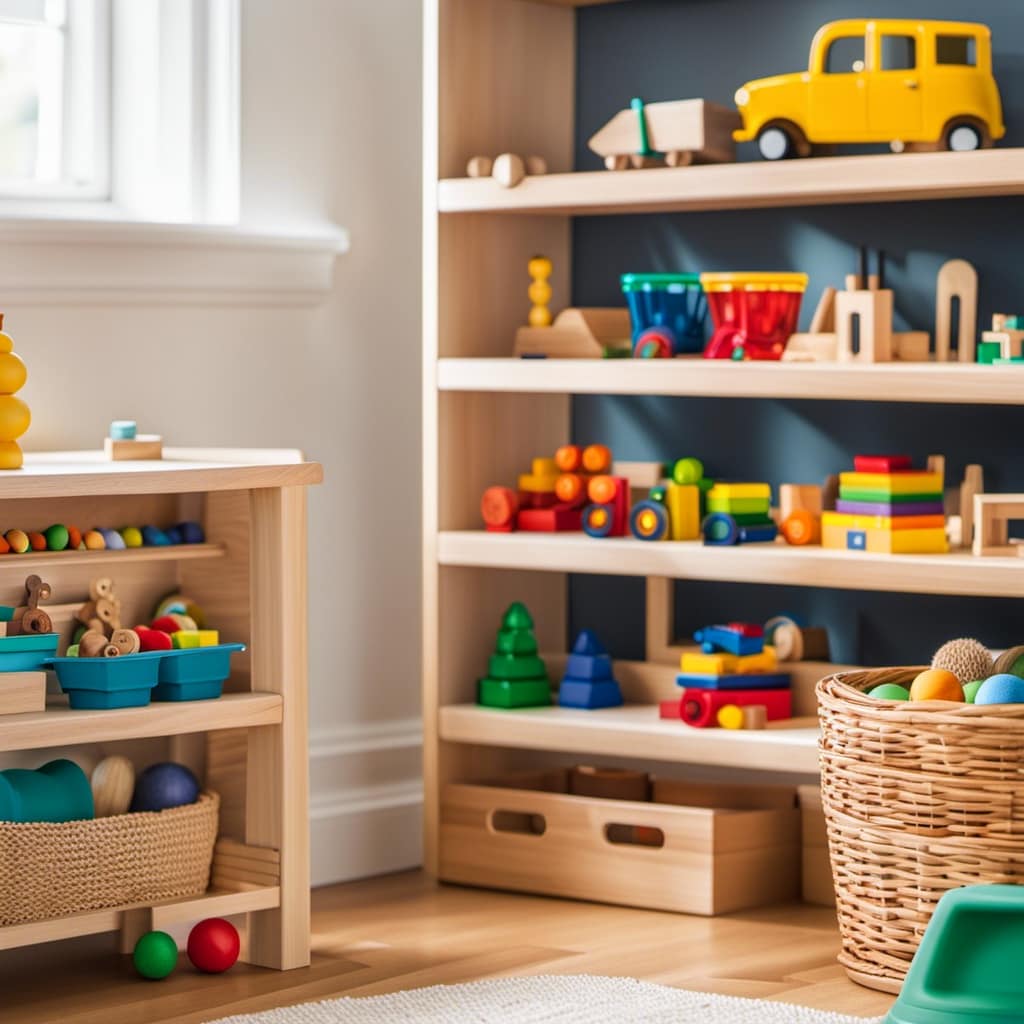
Block play offers a wide range of advantages for children of all ages. Firstly, it promotes cognitive development by enhancing problem-solving skills and spatial awareness. As children manipulate and arrange blocks, they learn about shapes, sizes, and how things fit together.
Additionally, block play helps to develop fine motor skills and hand-eye coordination as kids pick up and stack blocks. It also encourages creativity and imagination as children build structures, create stories, and explore different possibilities.
Moreover, block play allows for open-ended play, where there are no specific rules or instructions, allowing children to freely express themselves and explore their own ideas.
Now, let’s move on to the next section, where we’ll recommend some great block sets for your little ones.
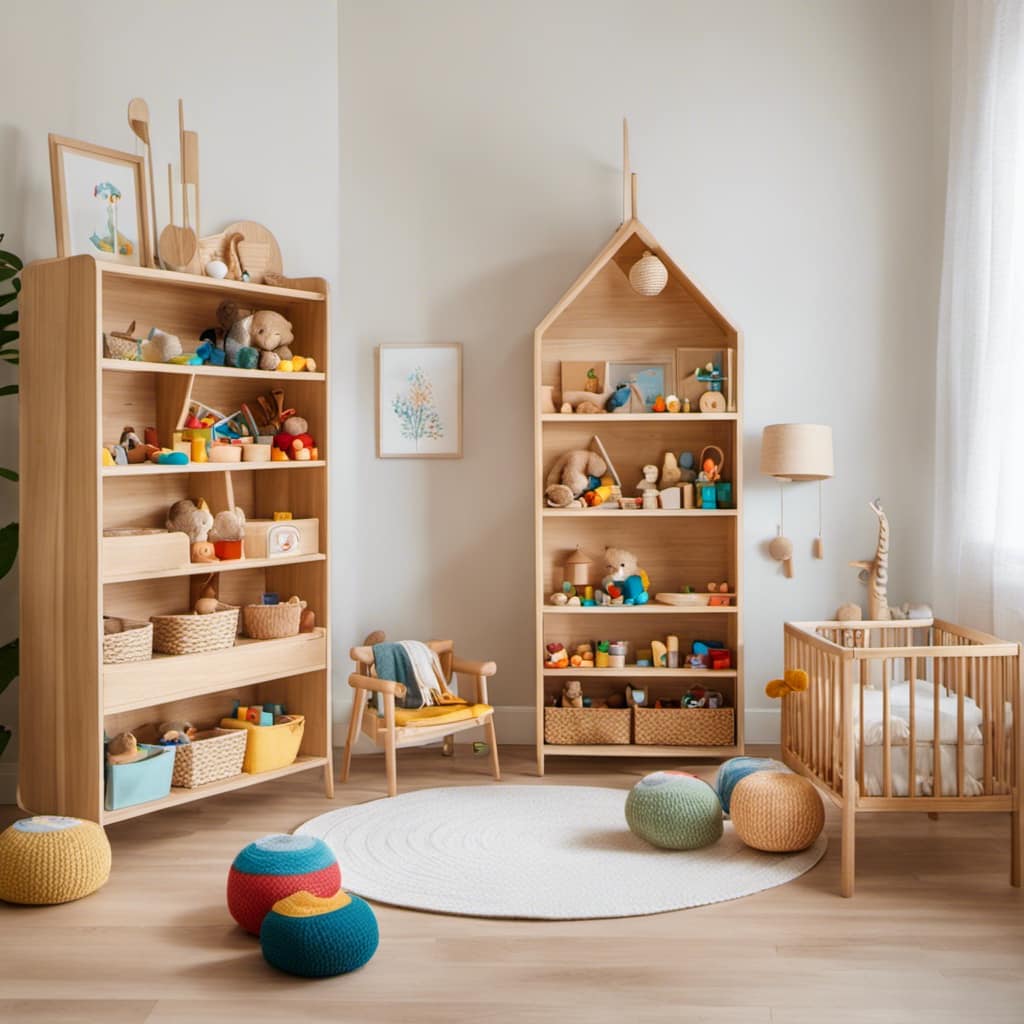
Recommended Block Sets
We have found some excellent block sets that are safe for your little ones to enjoy. These sets promote creative block play while helping to develop fine motor skills.
Here are three highly recommended options:
-
Melissa & Doug Wooden Building Blocks Set: These classic wooden blocks are durable and come in various shapes and sizes, allowing children to build structures of their imagination. The smooth edges ensure safety during playtime.
-
LEGO DUPLO My First Number Train: This set combines the fun of building with colorful blocks and introduces numbers and counting. It enhances problem-solving skills and hand-eye coordination while engaging young minds.
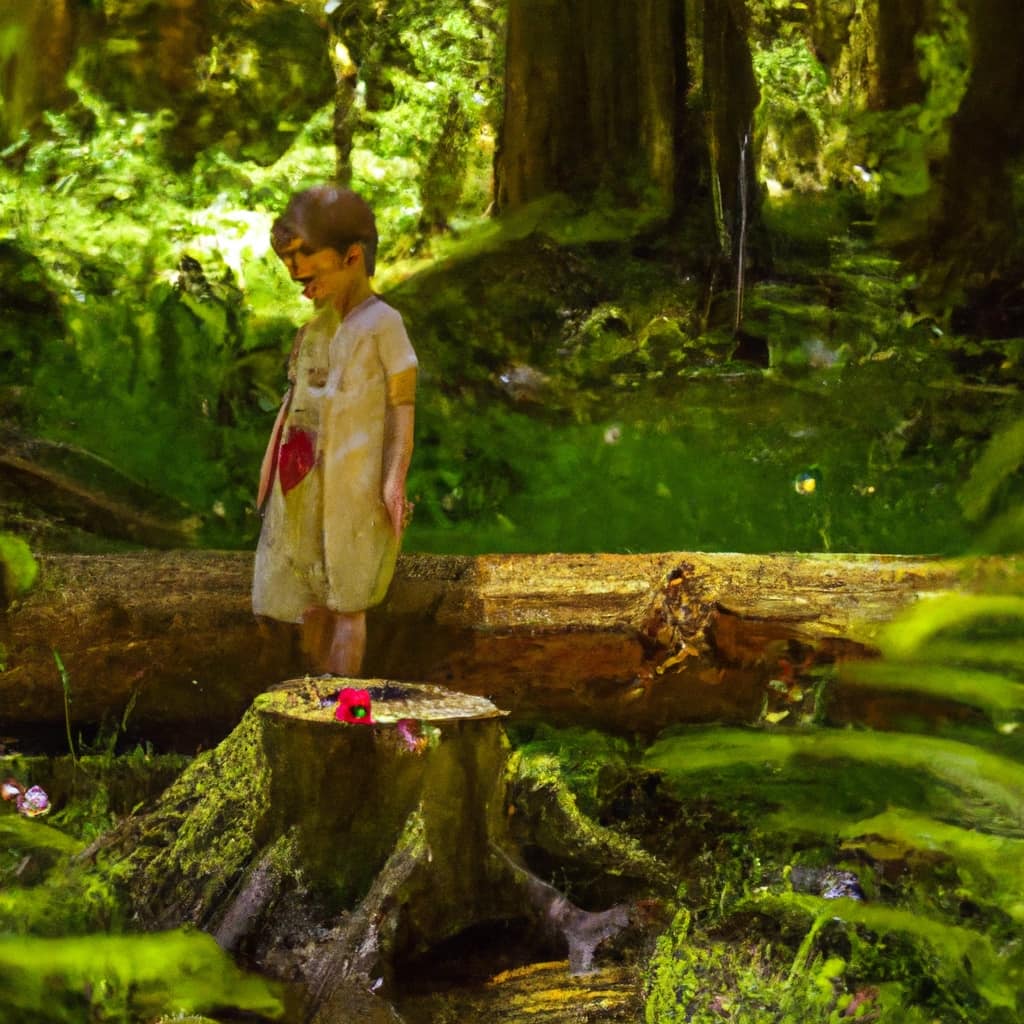
-
Mega Bloks First Builders Big Building Bag: Perfect for tiny hands, these big blocks are easy to grip and stack. The vibrant colors and different shapes stimulate creativity and inspire hours of imaginative play.
With these recommended block sets, your little ones can engage in creative block play while developing their fine motor skills.
Threading Toys
Our children love playing with threading toys because they provide a hands-on and interactive way for them to develop fine motor skills. Threading toys offer several benefits to our little ones.
Firstly, they help improve hand-eye coordination as children learn to manipulate the thread and guide it through the holes. Additionally, threading toys promote concentration and focus as children work to thread the beads or shapes onto the string. It also enhances their problem-solving skills as they figure out how to thread the pieces in the correct order.
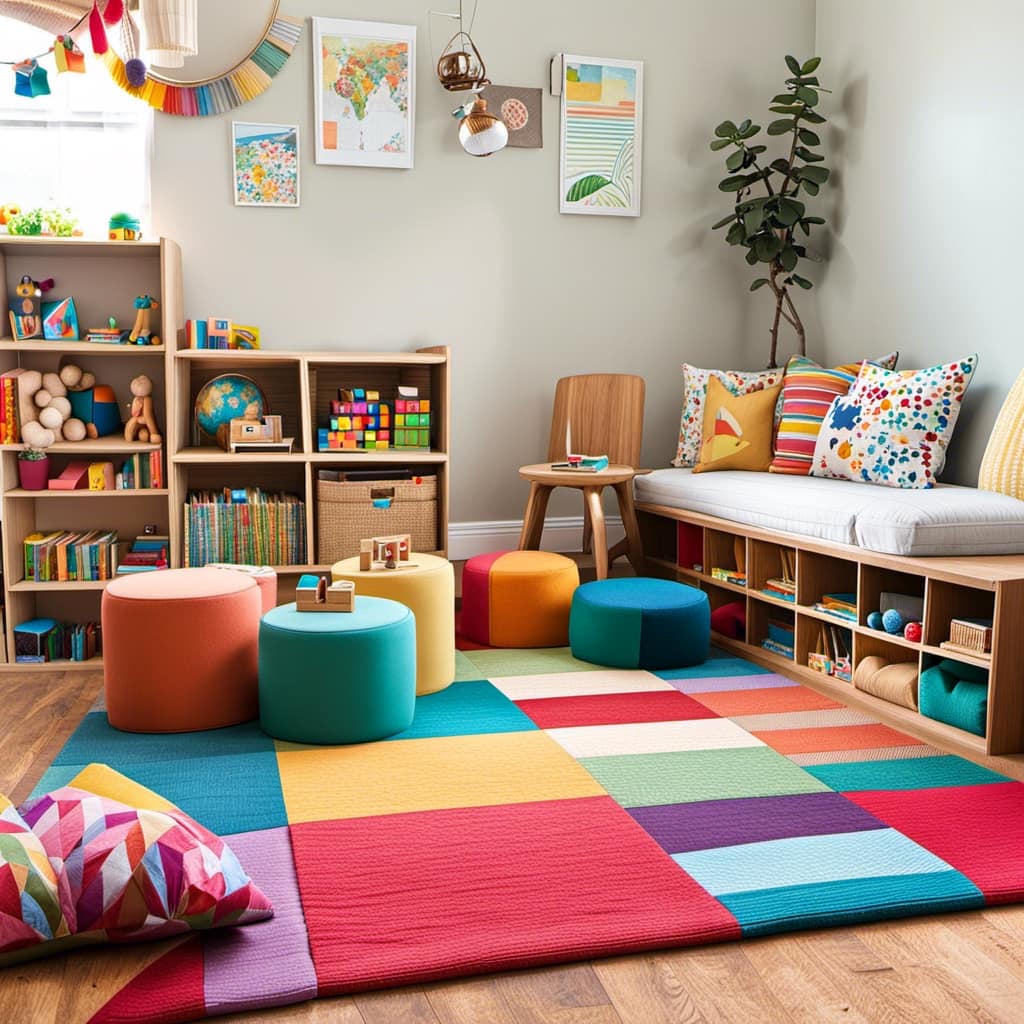
When it comes to safe threading toy options, we always opt for toys made from non-toxic materials and free of small parts that could pose a choking hazard. We also look for threading toys with smooth edges to prevent any accidents.
Now, let’s move on to the next section and explore the world of counting beads.
Counting Beads
Counting beads are a valuable Montessori toy that fosters numerical development in young children through hands-on engagement. These beads provide a fun and interactive way for children to learn and practice their counting skills.
Here are three reasons why counting beads are an excellent addition to your child’s learning tools:
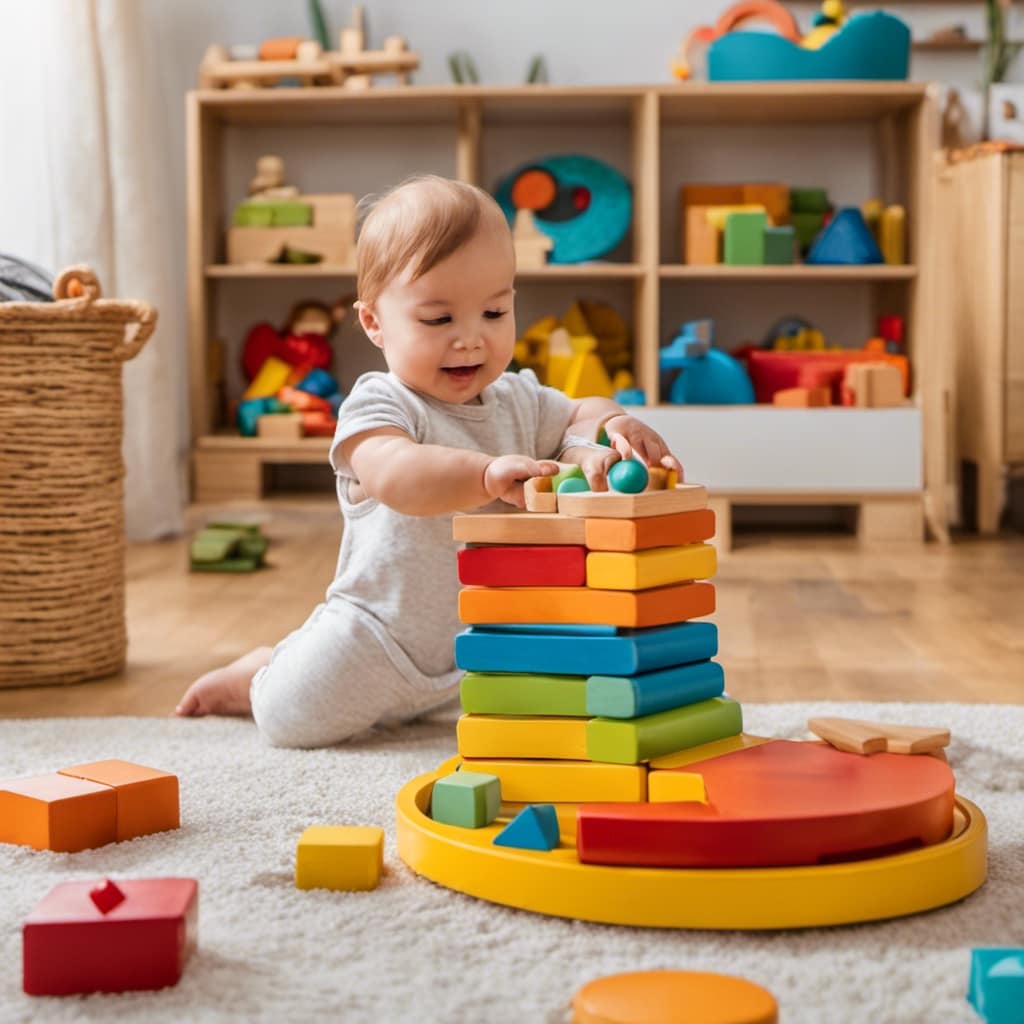
-
Counting Activities: Counting beads offer endless opportunities for counting activities. Children can group the beads into sets, count them one by one, and even practice skip counting. These activities help children develop a strong foundation in counting and number sense.
-
Number Recognition Games: Counting beads can also be used to play number recognition games. Children can match the beads to the corresponding numerals or arrange them in numerical order. These games make learning numbers exciting and help children strengthen their number recognition skills.
-
Hands-on Learning: Counting beads provide a hands-on learning experience that engages children’s senses. By physically moving and manipulating the beads, children develop a deeper understanding of numbers and quantities. This tactile experience enhances their learning and makes counting more enjoyable.
Incorporating counting beads into your child’s playtime is a fantastic way to support their numerical development. These versatile toys offer endless opportunities for counting activities and number recognition games, while also promoting hands-on learning.
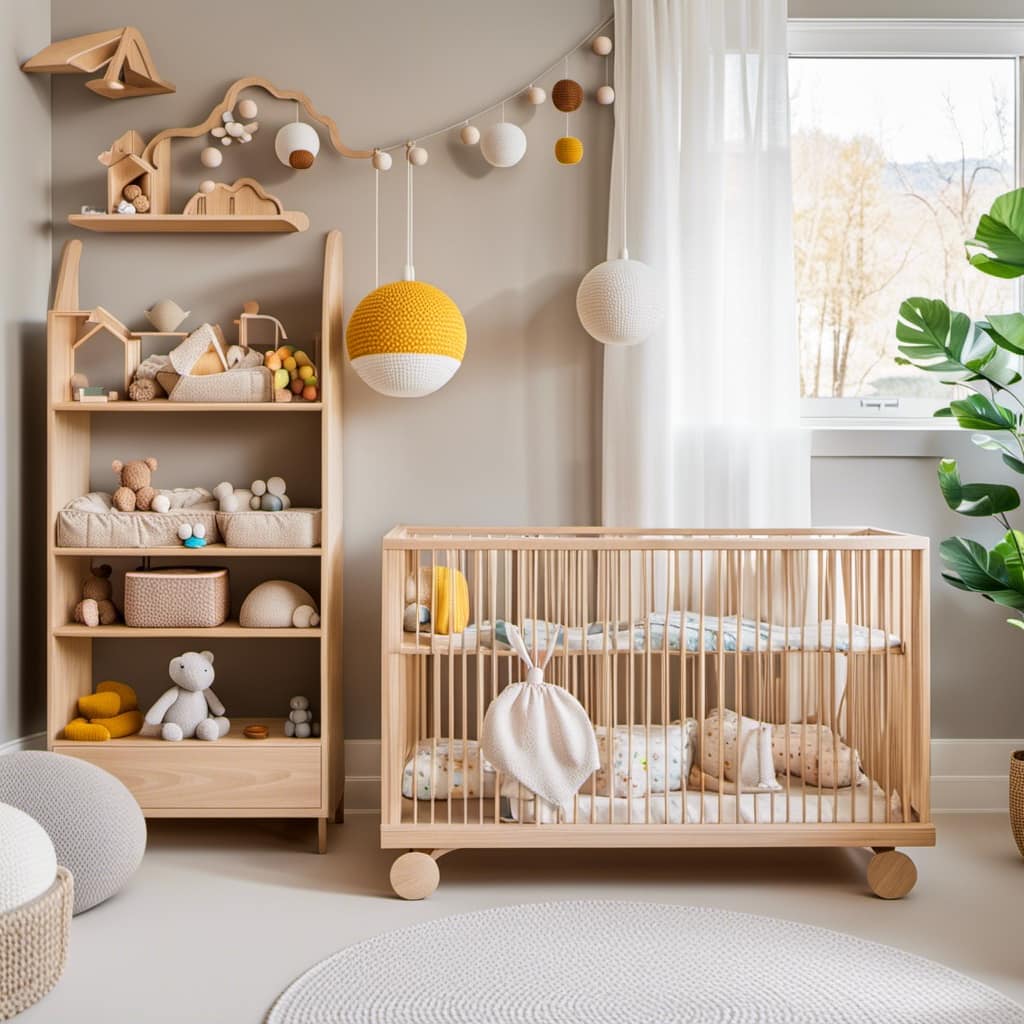
Pretend Play Sets
When it comes to fostering imagination and creativity in children, pretend play sets are essential. Not only do they provide hours of entertainment, but they also offer numerous developmental benefits.
Pretend play allows children to explore different roles, develop social skills, and enhance their problem-solving abilities.
When choosing pretend play sets, it’s important to prioritize safety by selecting toys made from non-toxic and durable materials.
Benefits of Pretend Play
Engaging in pretend play can have numerous benefits for children, fostering their imagination, creativity, and social skills. Here are three ways that pretend play sets can positively impact your little ones:
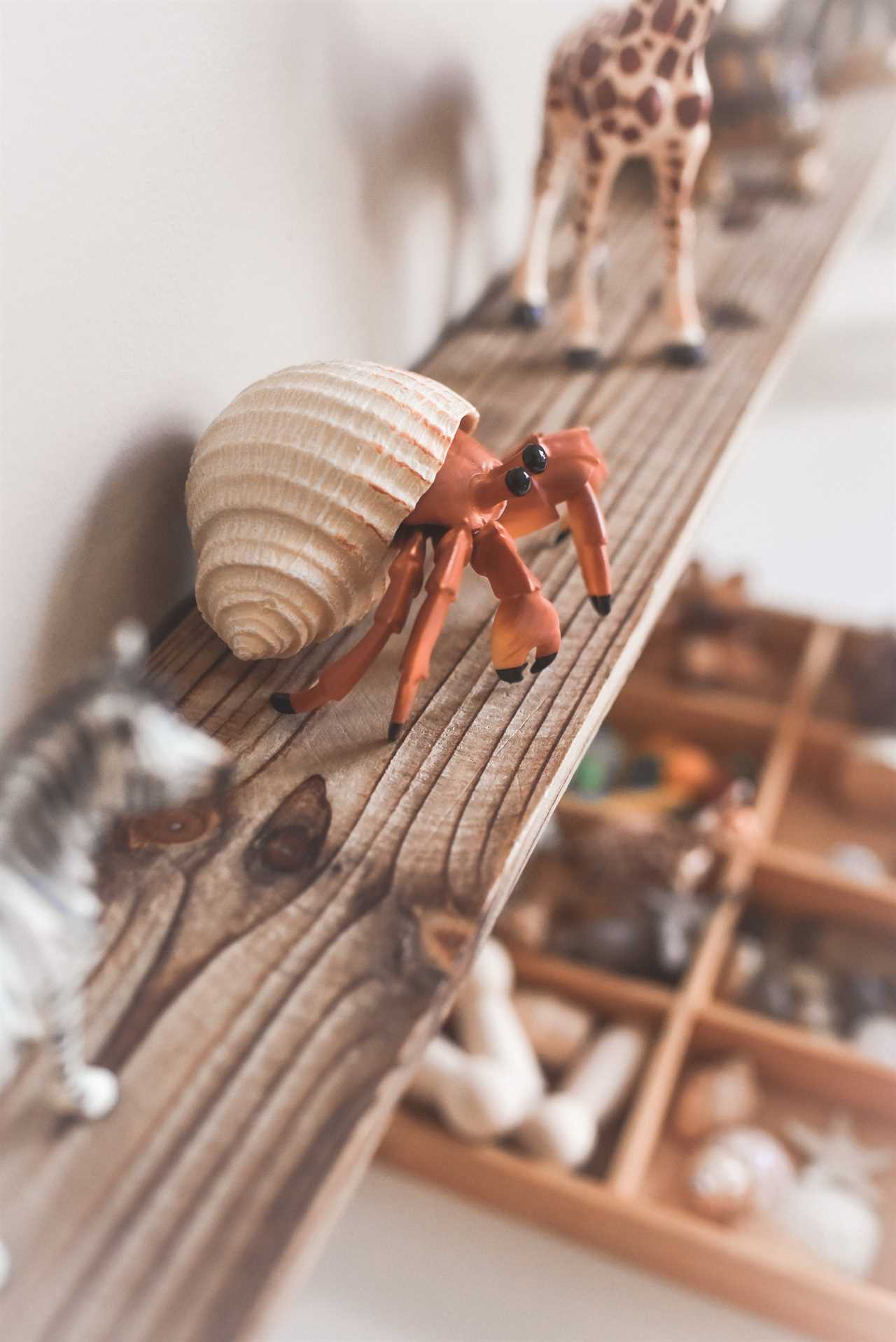
-
Imagination: Pretend play allows children to explore different scenarios and use their imagination to create new worlds. They can be astronauts, doctors, or even superheroes, all within the safe confines of their playroom. This imaginative play helps them develop problem-solving skills and think outside the box.
-
Creativity: Pretend play encourages children to think creatively and come up with innovative solutions. They can design their own costumes, build forts, or create elaborate storylines. This creativity helps them develop a sense of self-expression and fosters their artistic abilities.
-
Social Skills: Role playing activities promote social interaction and cooperation. Children can take turns, negotiate roles, and practice empathy while playing with others. This helps them develop important social skills such as communication, teamwork, and conflict resolution.
Safe Materials for Toys
To ensure the safety of our children, it’s crucial to choose toys made from non-toxic and durable materials when selecting pretend play sets. When it comes to safe materials for toys, there are a few options that stand out.
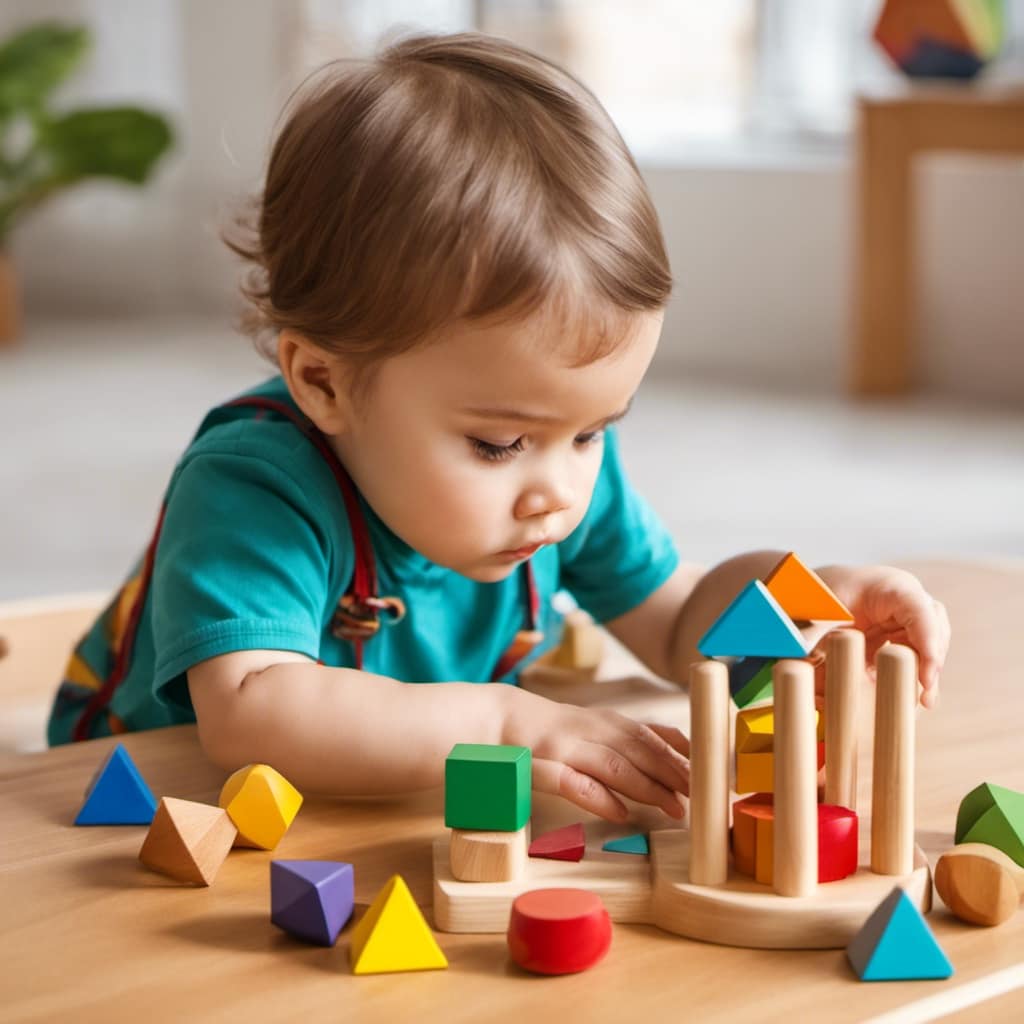
Wood is a popular choice as it’s natural, sturdy, and free from harmful chemicals. It also has a timeless appeal and can withstand rough play.
Another safe material is BPA-free plastic, which is lightweight, easy to clean, and durable.
Additionally, fabric toys made from organic cotton or other natural fibers are safe alternatives.
When considering the benefits of block play, safe materials are essential for promoting creativity and cognitive development.
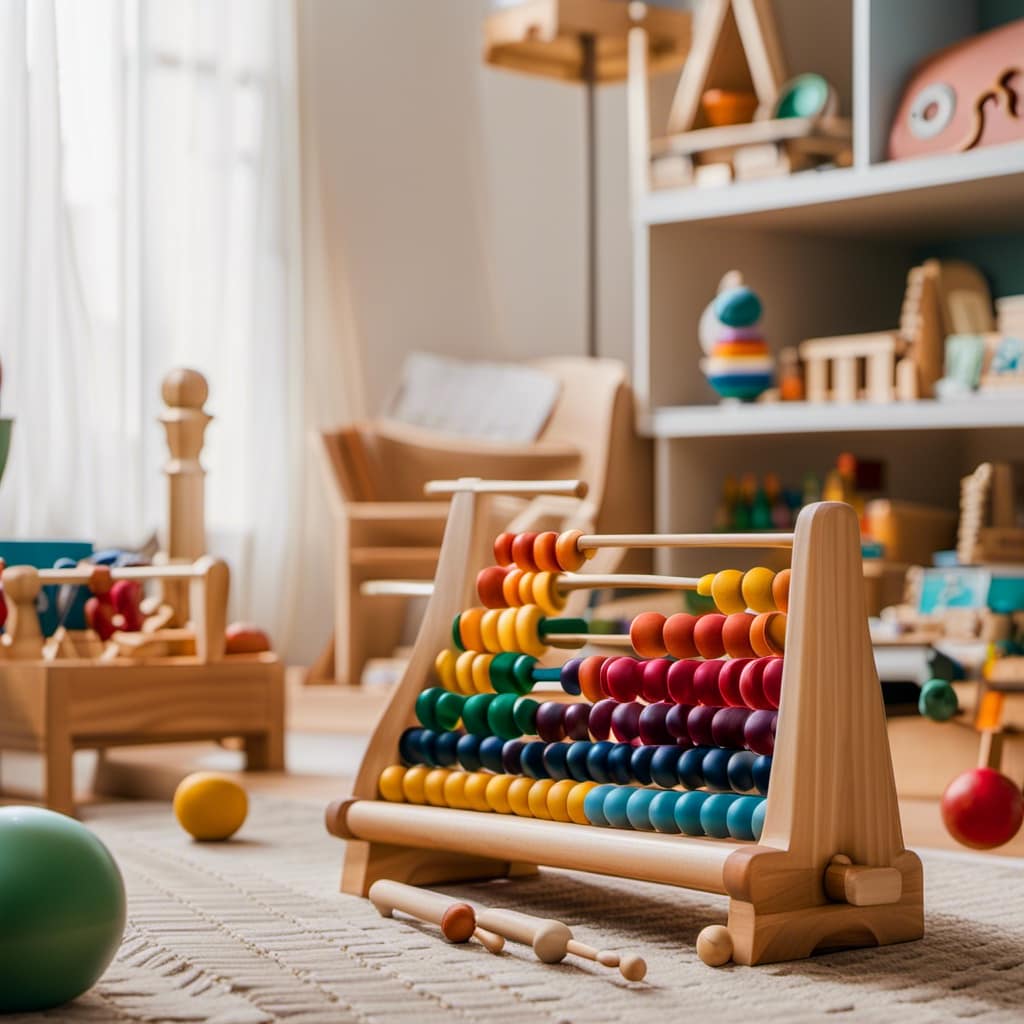
Montessori-Inspired Play Ideas
As we continue exploring safe Montessori toys for your little ones, let’s dive into some Montessori-inspired play ideas that encourage pretend play sets. These play ideas not only promote imaginative play but also provide opportunities for learning and development. Here are three Montessori-inspired play ideas that your child will love:
-
Montessori Inspired Sensory Activities: Create sensory bins filled with materials like rice, beans, or sand. Add scoops, containers, and small toys to encourage exploration and sensory development. Your child can engage in imaginative play by pretending to cook, build, or create with these sensory materials.
-
Open-Ended Play Ideas: Provide open-ended toys like wooden blocks, dolls, or dress-up clothes. These toys allow your child to use their imagination and creativity to come up with their own play scenarios. By engaging in open-ended play, children develop problem-solving skills, social skills, and language skills.
-
Pretend Play Sets: Invest in pretend play sets like a kitchen set, doctor kit, or tool set. These sets come with realistic props and accessories that encourage imaginative play. Your child can pretend to be a chef, doctor, or builder, promoting role-playing and enhancing their cognitive and social-emotional development.
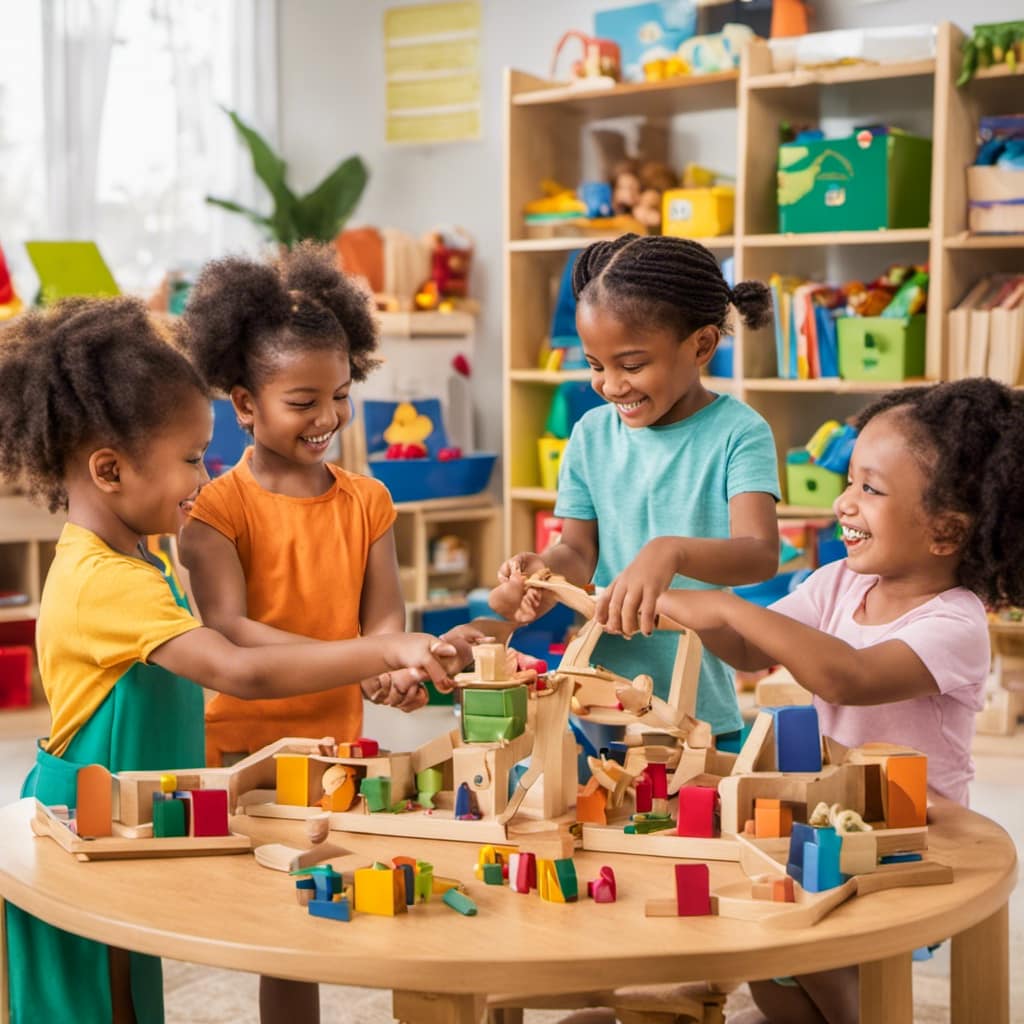
Now that we’ve explored some Montessori-inspired play ideas, let’s move on to the next section about magnetic tiles.
Magnetic Tiles
We love playing with magnetic tiles because they offer endless opportunities for creativity and learning. Magnetic tiles are a type of educational toy that uses magnets to allow children to build and create various structures. They come in different shapes and sizes, allowing children to explore and experiment with their imagination.
One of the benefits of magnetic tiles is that they help develop fine motor skills and hand-eye coordination. As children manipulate and connect the tiles, they improve their dexterity and spatial awareness. Additionally, magnetic tiles are also great for sensory play, as the magnets provide a satisfying tactile experience.
Here is a comparison of magnetic tiles and sensory balls:

| Magnetic Tiles | Sensory Balls |
|---|---|
| Promote creativity | Enhance sensory exploration |
| Develop fine motor skills | Improve hand-eye coordination |
| Encourage spatial awareness | Provide tactile stimulation |
| Can be used for open-ended play | Offer a variety of textures |
| Promote problem-solving skills | Can be therapeutic for stress relief |
Art Supplies
When it comes to art supplies for our little ones, safety is our top priority. We want to ensure that the materials they use are non-toxic and free from harmful chemicals.
At the same time, we also want to provide them with options that encourage their creative expression and allow their imaginations to soar.
Non-Toxic Options
For ensuring the safety of our little ones, let’s explore non-toxic options for art supplies in the realm of Montessori toys. When it comes to Montessori inspired craft activities, it’s important to choose art supplies that are safe and free from harmful chemicals.
Here are three non-toxic options that can provide hours of creative fun for your child:
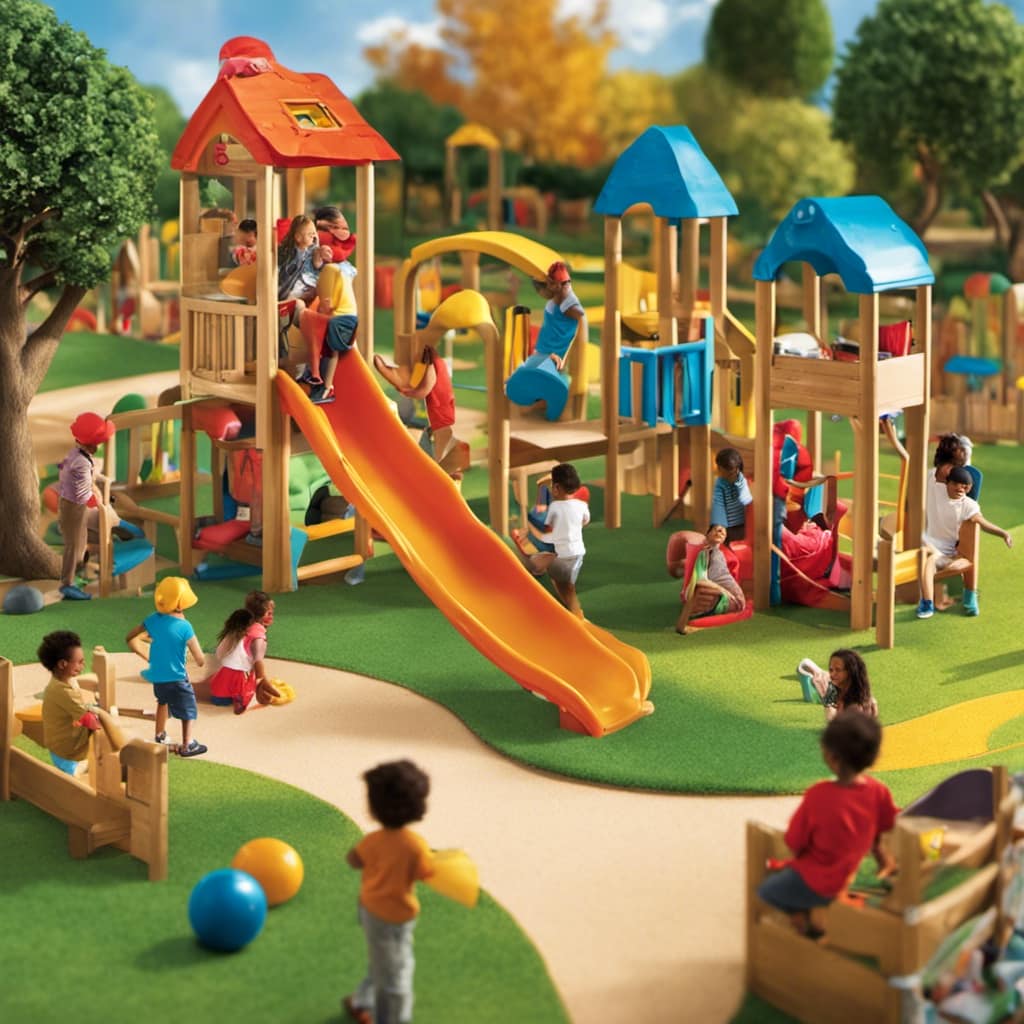
-
Eco-friendly crayons: Look for crayons made from natural ingredients such as beeswax or soy, which are free from toxic additives like lead or phthalates. These crayons are safe for children to use and are also better for the environment.
-
Water-based paints: Opt for water-based paints that are non-toxic and washable. These paints are safe for young children to use and can be easily cleaned up with water. They come in a variety of vibrant colors, allowing your child to explore their creativity.
-
Non-toxic play dough: Choose play dough that’s made from natural ingredients and doesn’t contain harmful chemicals. Non-toxic play dough is safe for little ones to play with and can help develop their fine motor skills and creativity.
By providing your child with non-toxic art supplies, you can ensure their safety while encouraging their creative expression.
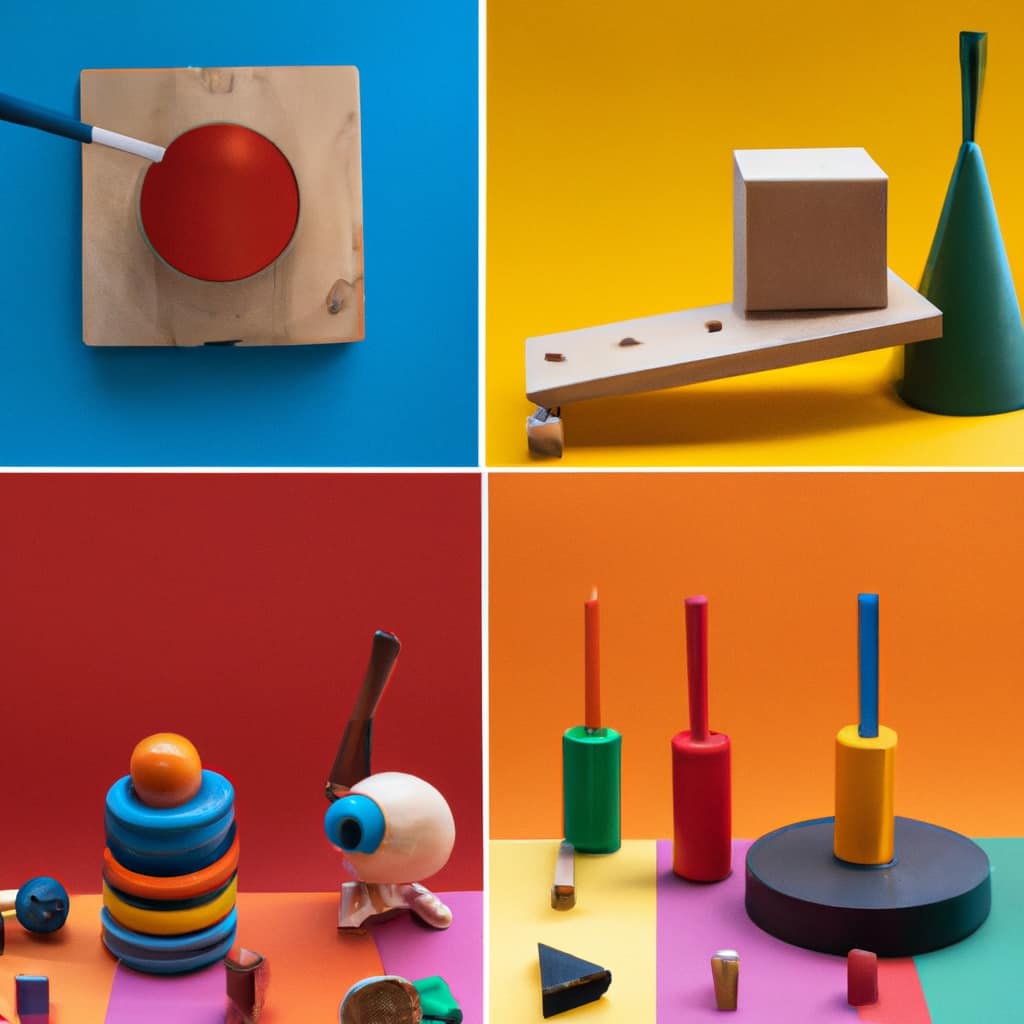
Now, let’s explore some creative expression options for our little ones.
Creative Expression Options
To enhance our children’s creative expression, we can explore various art supplies that provide endless possibilities for imaginative play.
When it comes to Montessori approved art supplies, there are a few options that are both safe and stimulating for little ones.
One great option is a set of non-toxic crayons and markers, which allows children to freely express their creativity on paper.
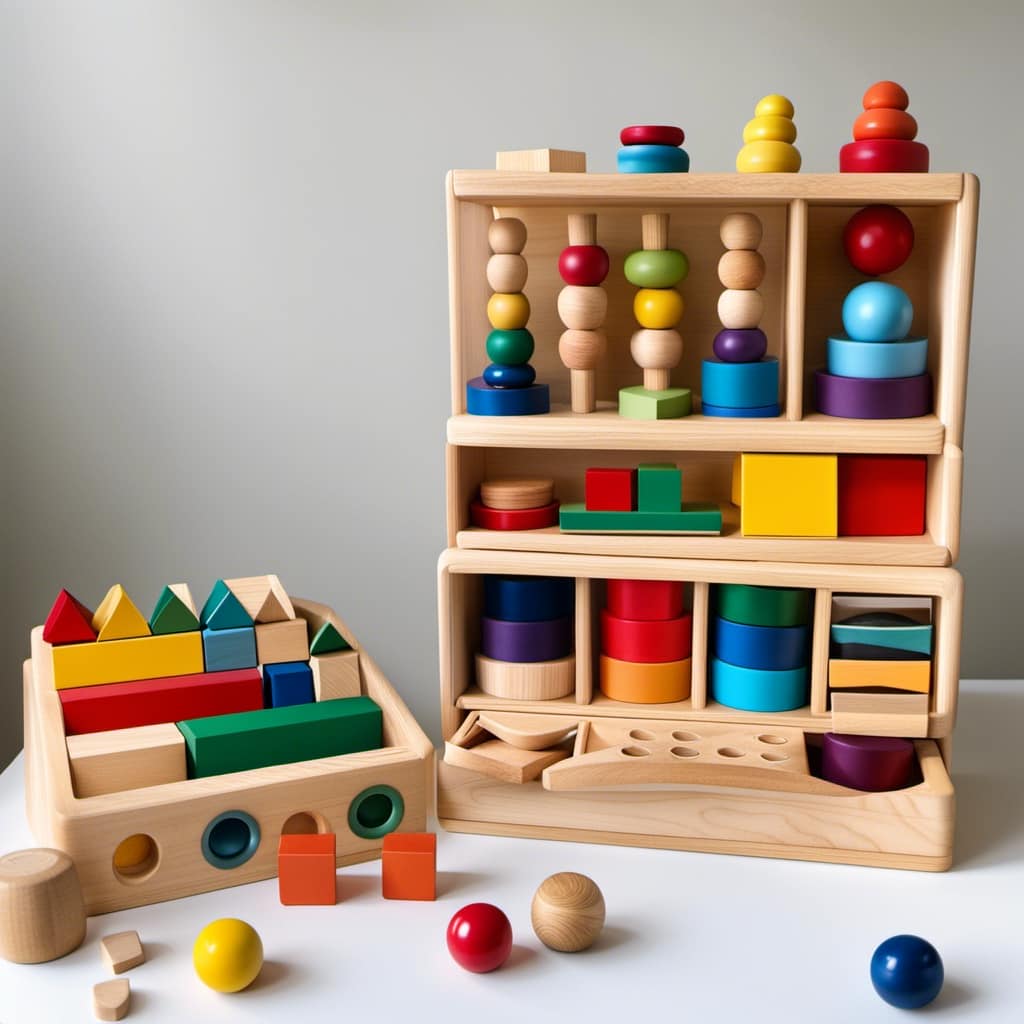
Another popular choice is a set of washable paints and brushes, giving children the opportunity to explore different colors and textures.
For those who enjoy building and creating, magnetic tiles are an excellent choice. These tiles can be easily manipulated to create structures, encouraging problem-solving skills and spatial awareness.
With these art supplies, our children can engage in creative play and develop their artistic abilities in a safe and stimulating environment.
Marble Runs
We enjoy watching our children engage with the Montessori toy of marble runs, as they learn through hands-on exploration and problem-solving. Marble runs offer numerous benefits for our little ones, fostering their cognitive development and creativity. Here are three different types of marble runs that provide endless hours of fun and learning:
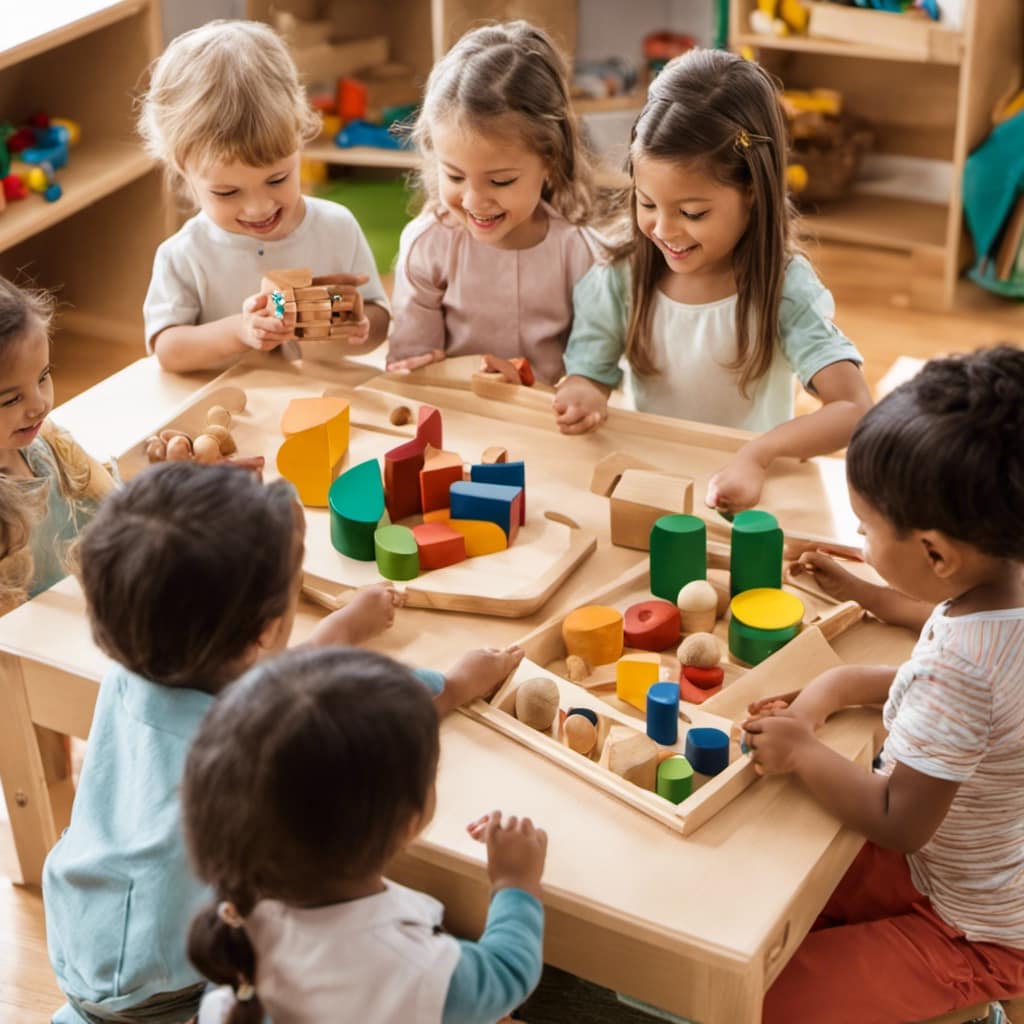
-
Classic Marble Runs: These sets typically consist of tracks, ramps, and tunnels that children can assemble in various configurations. They encourage critical thinking as kids experiment with different designs to create the perfect pathway for the marbles.
-
Magnetic Marble Runs: These sets add an extra element of excitement by incorporating magnets. Children can use the magnetic pieces to build structures that guide the marbles through twists and turns, enhancing their fine motor skills and spatial awareness.
-
Wooden Marble Runs: Made from natural materials, these eco-friendly sets offer a tactile experience. Kids can arrange the wooden tracks and obstacles to create unique marble pathways, promoting problem-solving abilities and imaginative play.
With their educational value and endless possibilities, marble runs are a fantastic addition to any Montessori toy collection.
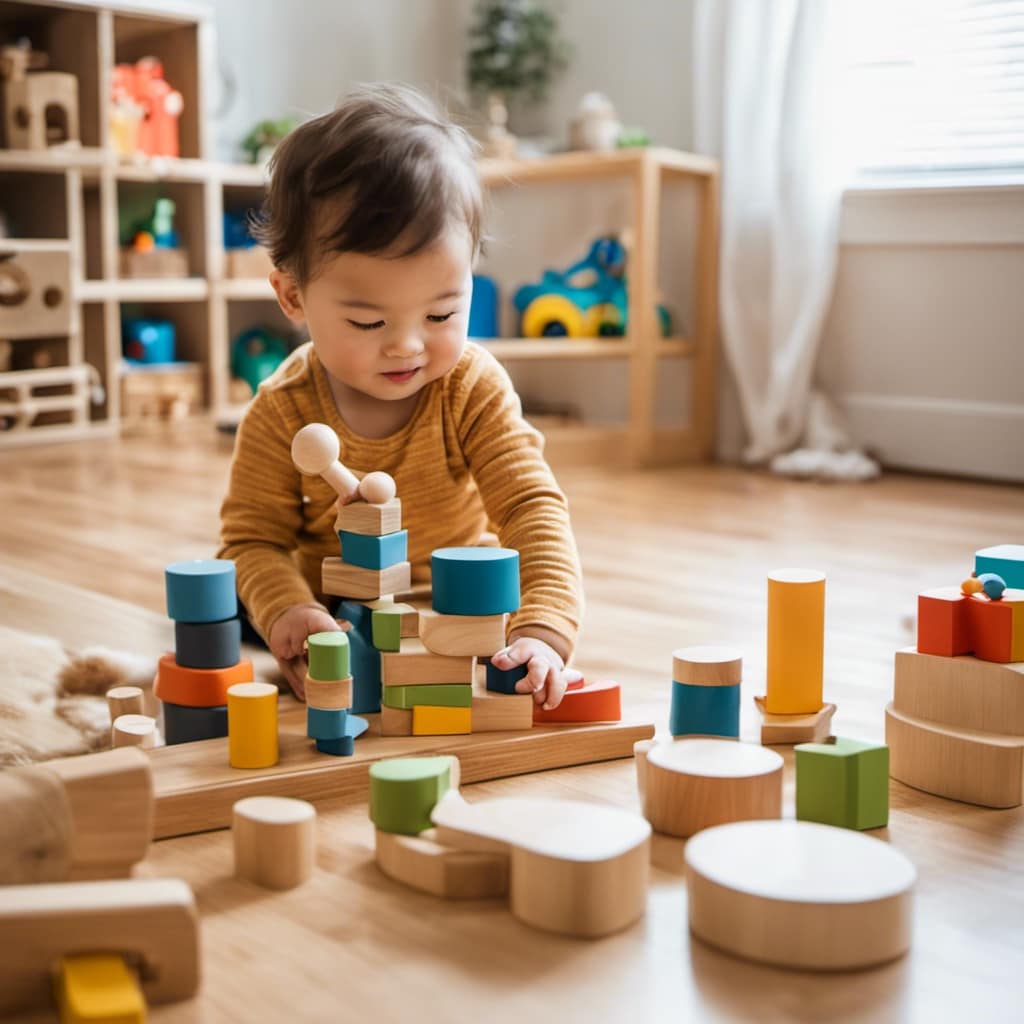
Sorting and Matching Games
Let’s talk about the benefits of sorting and matching games for our little ones.
These games aren’t only fun, but they also play a crucial role in developing important skills such as cognitive thinking, problem-solving, and hand-eye coordination.
By engaging in these activities, children learn to categorize and organize objects based on their similarities and differences.
When choosing Montessori-approved toys for sorting and matching, look for options that are safe, durable, and age-appropriate, such as shape sorters, color matching puzzles, and pattern recognition games.
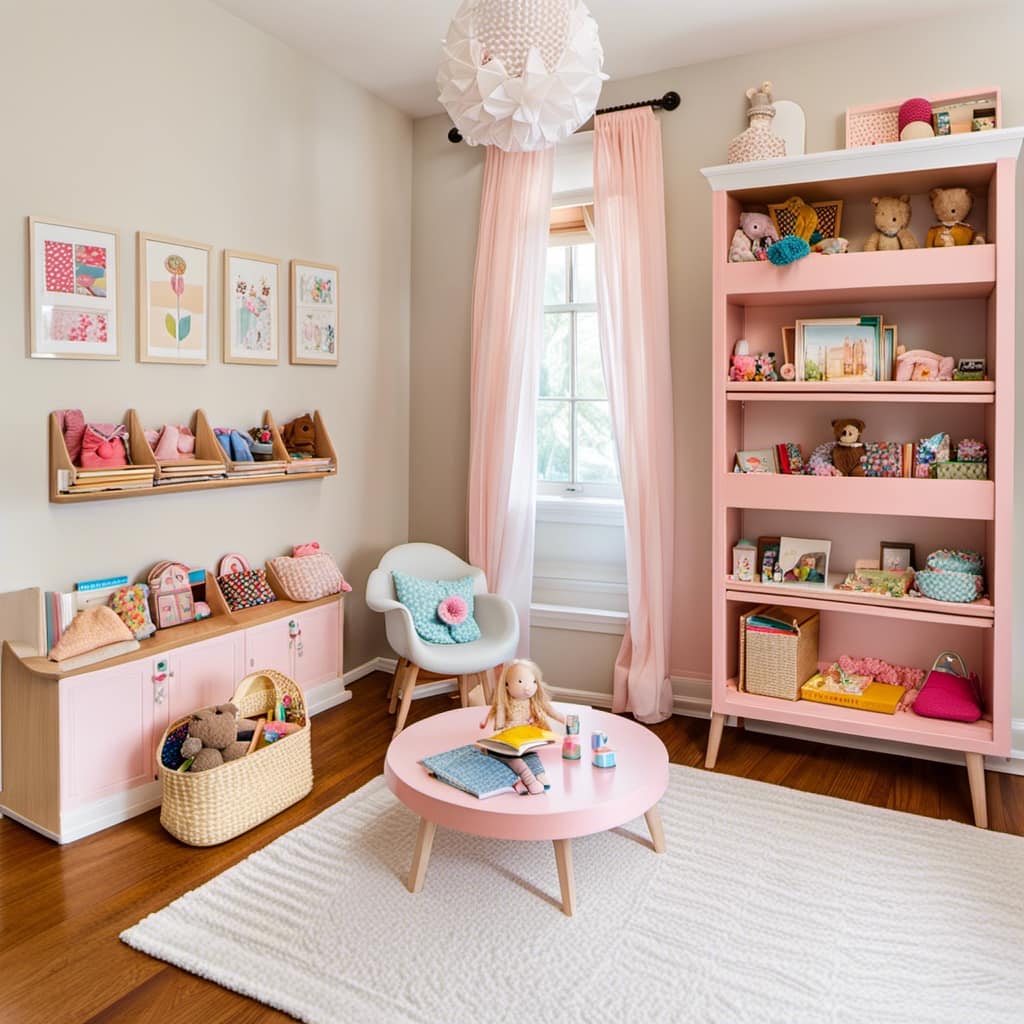
Benefits of Sorting
By engaging in sorting and matching games, young children develop essential cognitive skills. These games offer a range of benefits that aid in their overall development.
-
Enhanced sensory play: Sorting and matching games provide children with a hands-on experience that engages their senses. The act of touching and manipulating objects stimulates their tactile and visual senses, helping them explore different textures, shapes, and colors.
-
Improved fine motor skills: Sorting and matching games require children to use their fingers and hands to manipulate objects, improving their fine motor skills. As they grasp and place items in the correct slots or compartments, they hone their hand-eye coordination and dexterity.
-
Cognitive development: These games promote critical thinking and problem-solving skills. By sorting objects based on various attributes, such as color, shape, or size, children learn to categorize and classify information. This helps them develop logical thinking, spatial awareness, and the ability to recognize patterns.
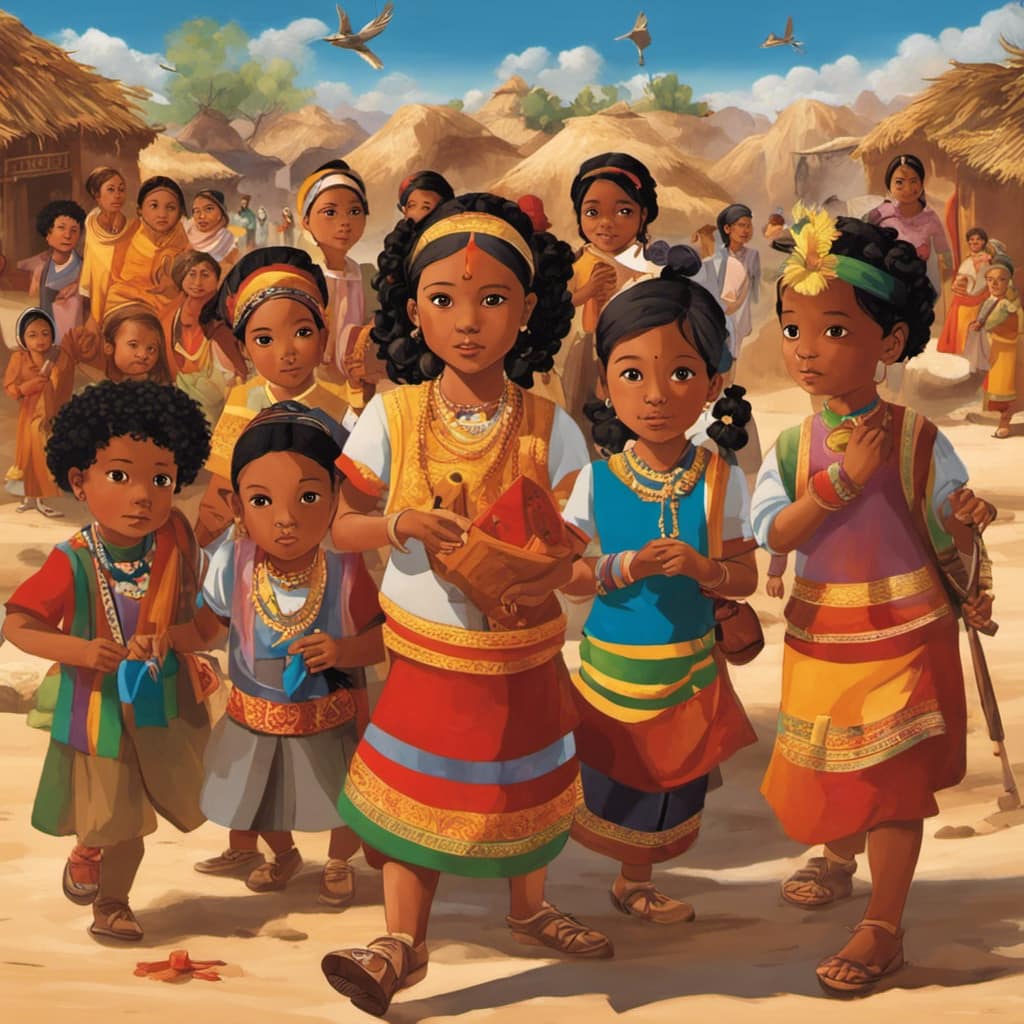
Engaging in sorting and matching games not only provides children with a fun and interactive play experience but also supports their cognitive and motor skill development.
Matching Skills Development
As parents, it’s important to encourage the development of matching skills through sorting and matching games for our little ones. Matching skills development plays a crucial role in their cognitive growth and problem-solving abilities. By engaging in sorting and matching games, children learn to identify similarities and differences, enhance their visual discrimination skills, and strengthen their memory retention.
These activities also promote critical thinking, as children have to analyze and categorize objects based on their characteristics. Additionally, matching games provide a fun and interactive way for children to practice their fine motor skills and hand-eye coordination. As they manipulate objects and match them correctly, they develop their dexterity and control.
Montessori-Approved Toy Options
One of the Montessori-approved toy options for developing sorting and matching skills is a set of shape sorting puzzles. These puzzles aren’t only fun and engaging but also help children enhance their cognitive abilities and fine motor skills.

Here are three Montessori-inspired play ideas using shape sorting puzzles:
-
Animal Shapes: A set of wooden puzzles with different animal shapes can help children learn about animals while developing their sorting and matching skills. They can match the animal shapes to their corresponding slots and learn about different animals in the process.
-
Color Sorting: A color sorting puzzle with various colored shapes can help children recognize and sort different colors. They can match the shapes to their corresponding colored slots, promoting color recognition and coordination.
-
Number and Shape Matching: A puzzle that combines numbers and shapes can help children learn about numbers and shapes simultaneously. They can match the numbered shapes to their corresponding slots, reinforcing their understanding of numbers and shapes.
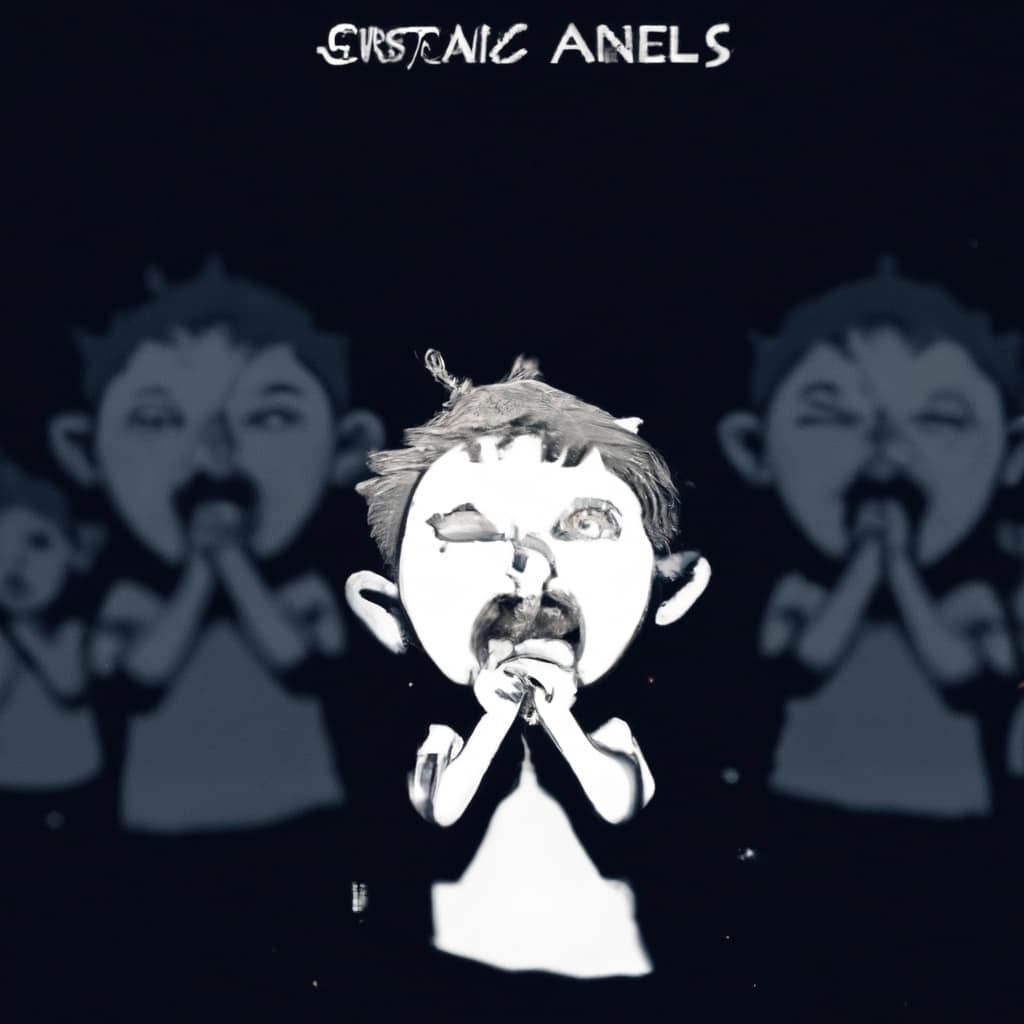
When choosing Montessori-inspired toys, it’s important to prioritize safe materials for toys, such as wooden puzzles that are non-toxic and free from small pieces that could pose a choking hazard. These toys not only provide educational value but also ensure the safety and well-being of your little ones.
Frequently Asked Questions
Are Montessori Toys Suitable for Children of All Ages?
Yes, Montessori toys are suitable for children of all ages. They provide numerous benefits for babies and toddlers, promoting cognitive, physical, and social development. Additionally, Montessori toys can be particularly beneficial for children with special needs.
How Can I Ensure the Safety of Montessori Toys for My Child?
To ensure the safety of Montessori toys, we choose non-toxic materials and ensure proper construction. It’s important to prioritize our little ones’ well-being, so we can have peace of mind while they play and learn.
Can Montessori Toys Help Develop Specific Skills in Children?
Montessori toys can greatly aid in developing fine motor skills and promoting problem-solving abilities in children. They provide hands-on experiences that engage children’s minds and encourage independent thinking.
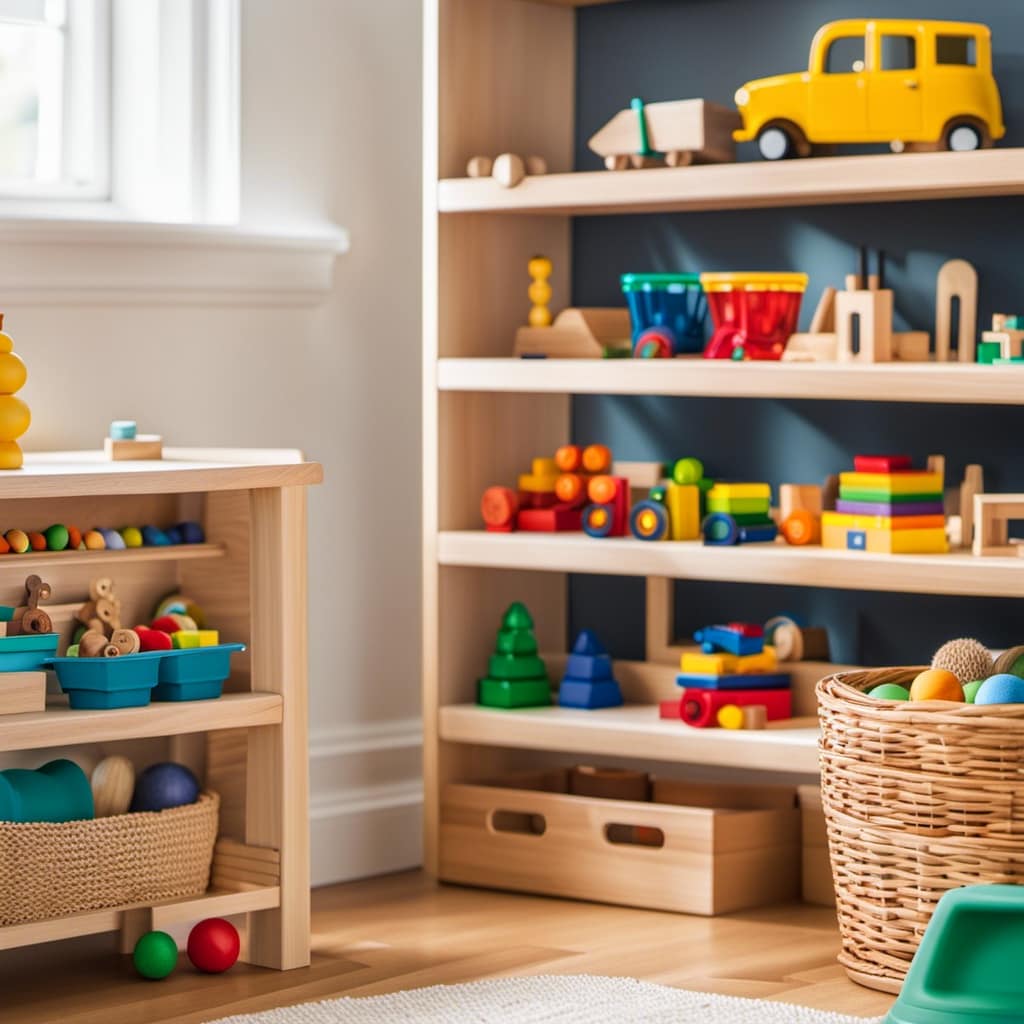
What Are Some Recommended Montessori Toy Brands?
Some recommended Montessori toy brands for sensory development and eco-friendly options are available. These toys can help stimulate your little ones’ senses while being environmentally conscious.
How Do I Choose the Right Montessori Toys for My Child’s Developmental Stage?
When choosing age appropriate Montessori toys, we consider factors like the child’s developmental stage and interests. It’s important to provide toys that challenge their skills and promote independent learning.
Conclusion
In conclusion, Montessori toys provide a safe and educational play experience for little ones.
For example, let’s consider a case study of a toddler playing with wooden blocks. As they stack and arrange the blocks, they develop fine motor skills, spatial awareness, and problem-solving abilities. The tactile nature of the blocks also stimulates their sensory development.
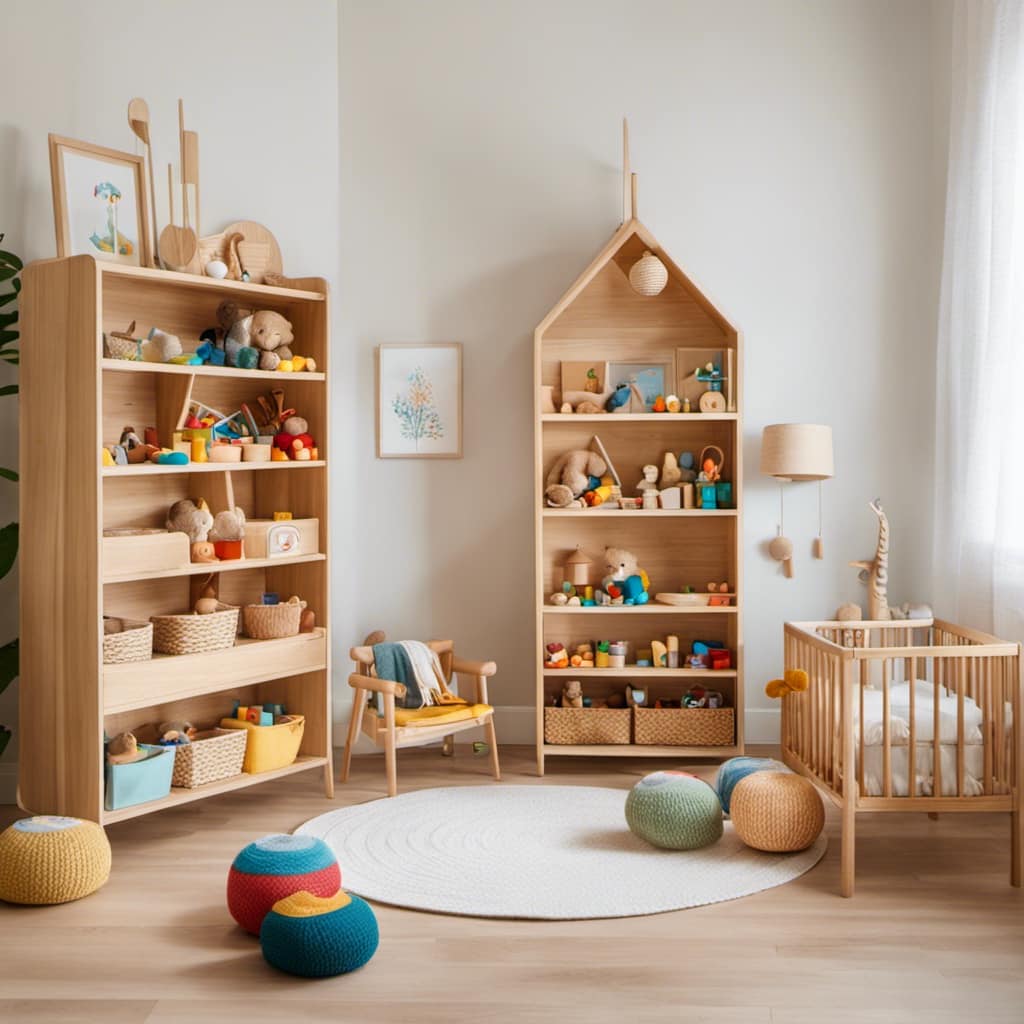
With a wide range of Montessori toys available, parents can ensure their children have engaging and enriching playtime experiences.







